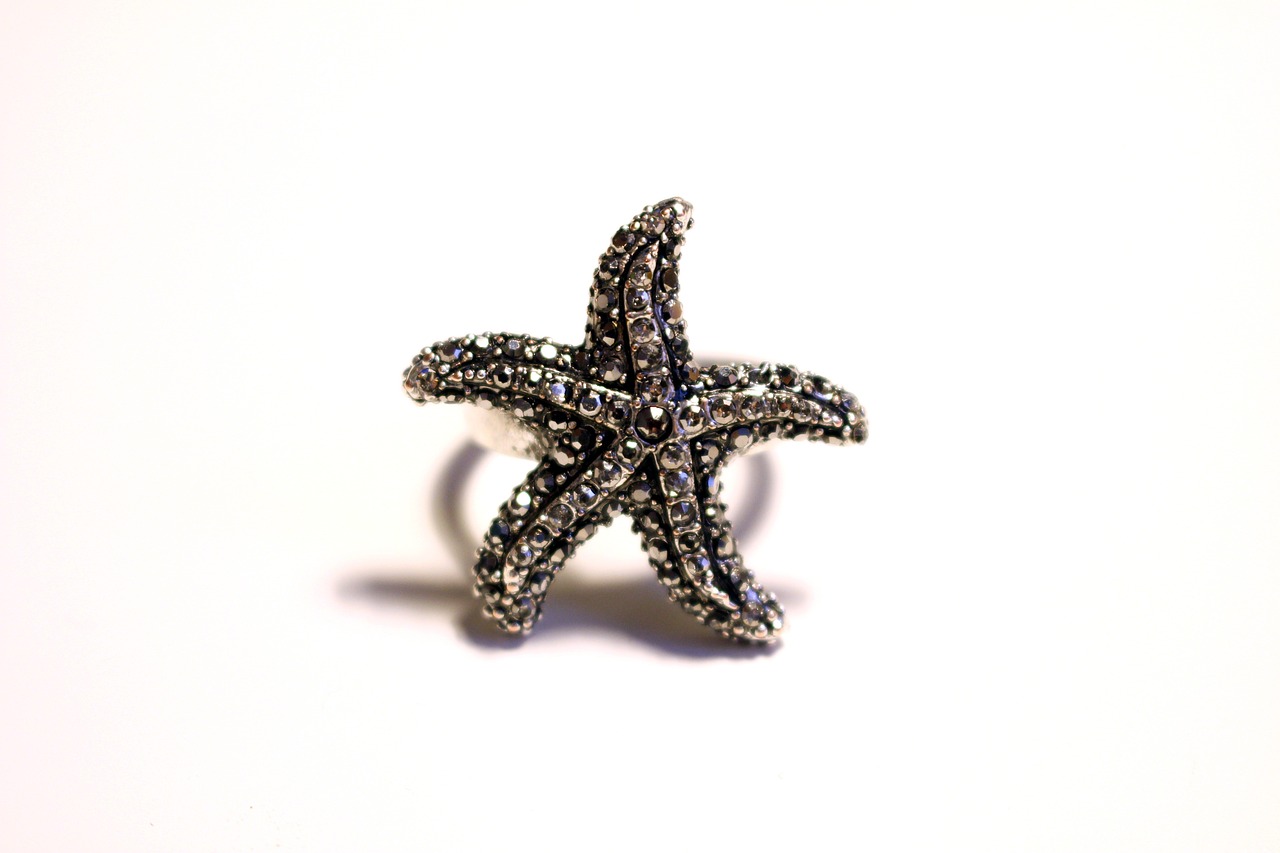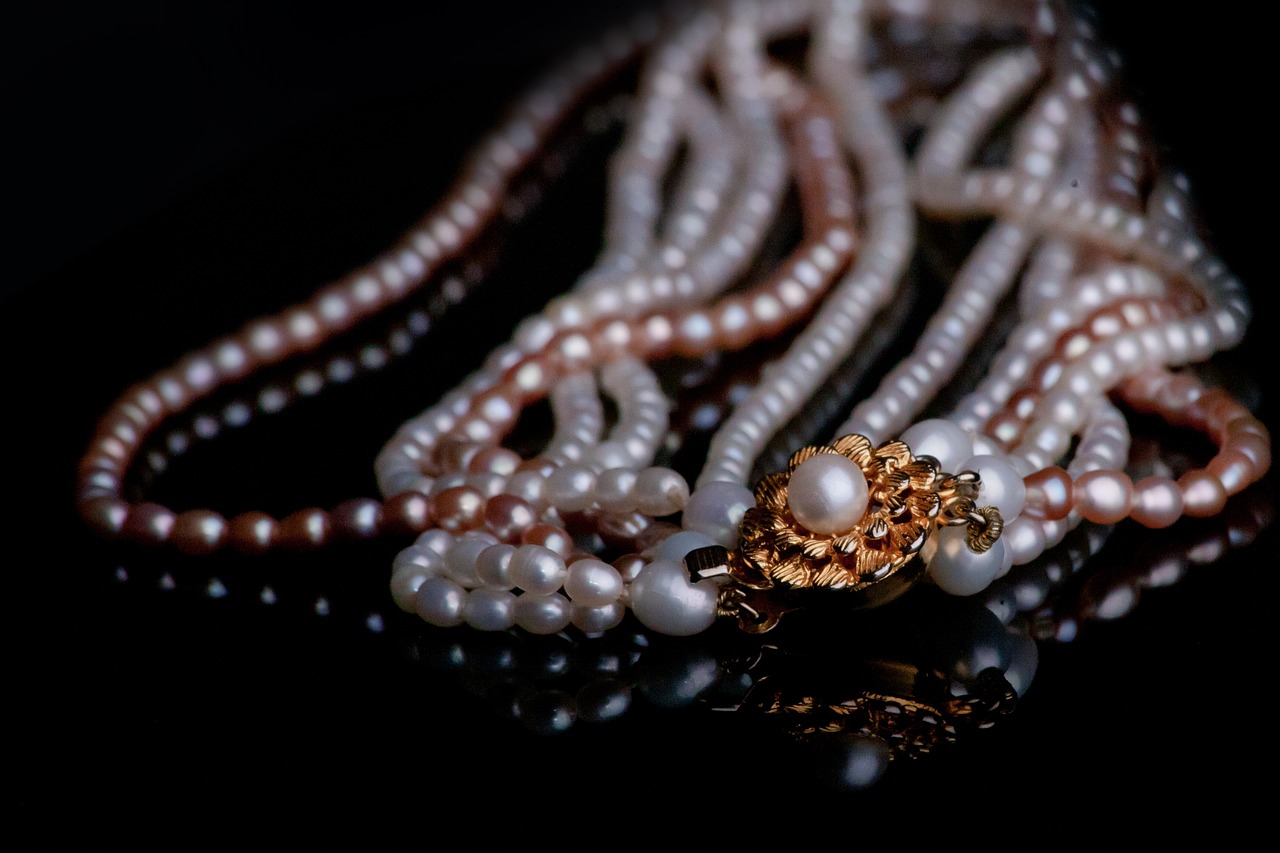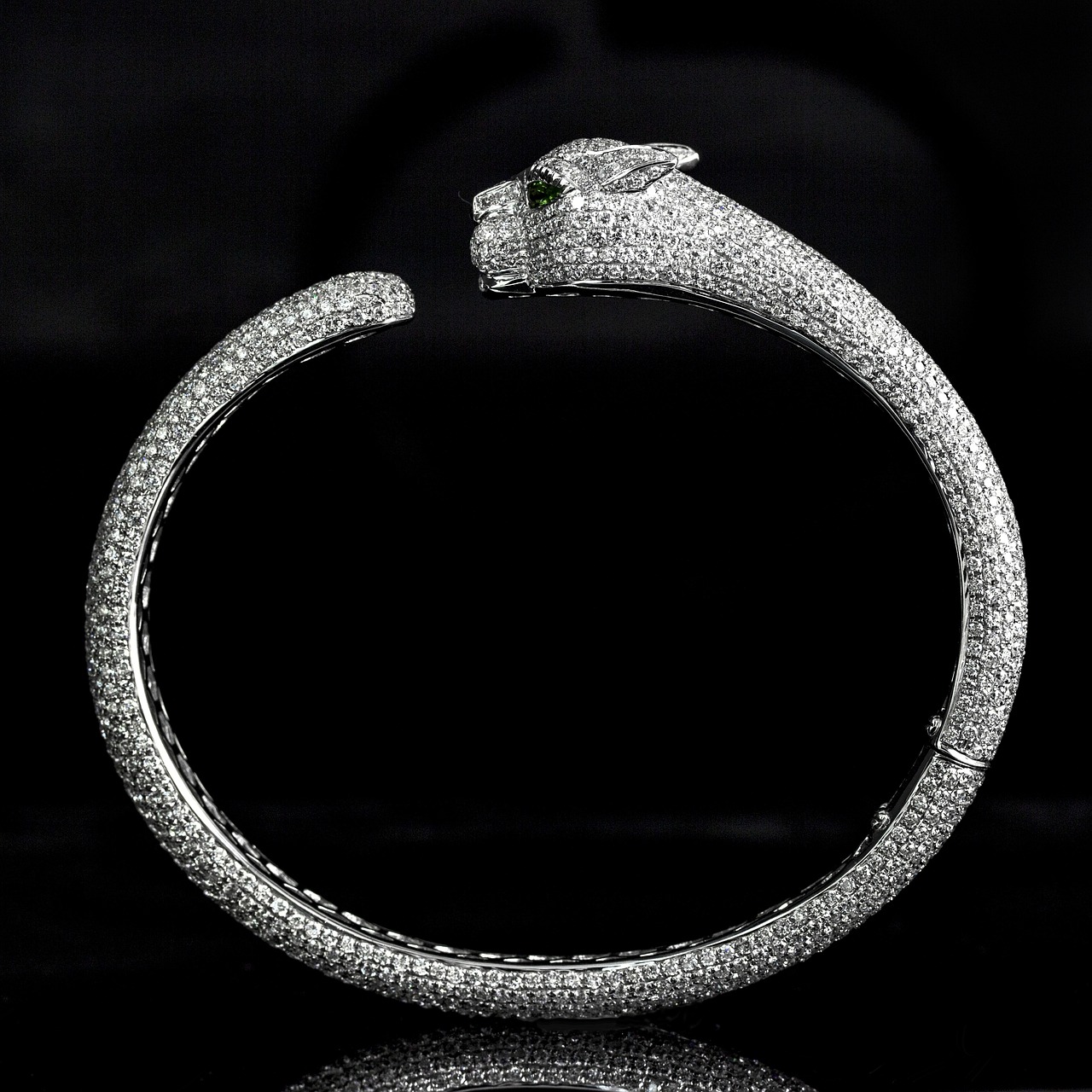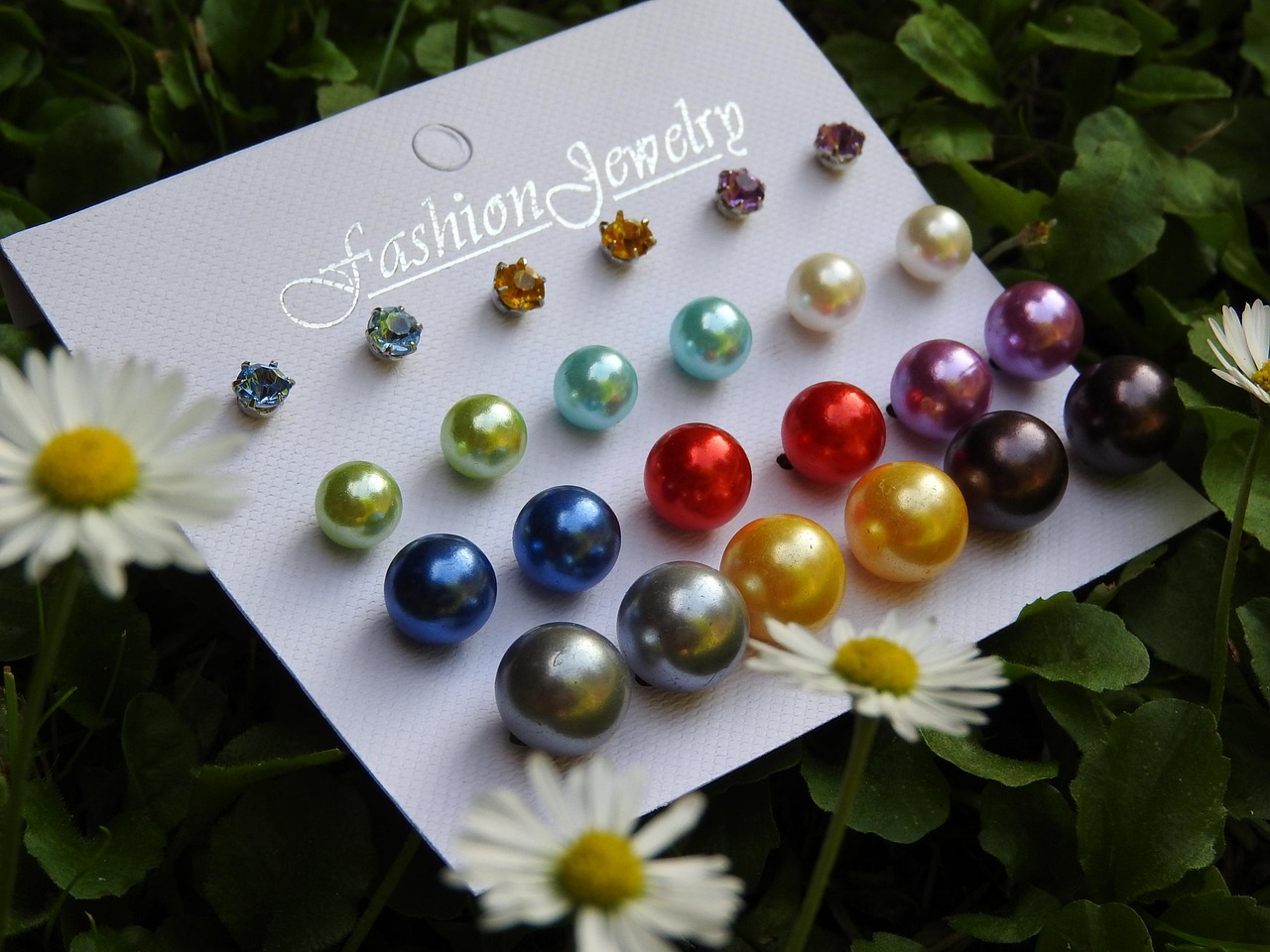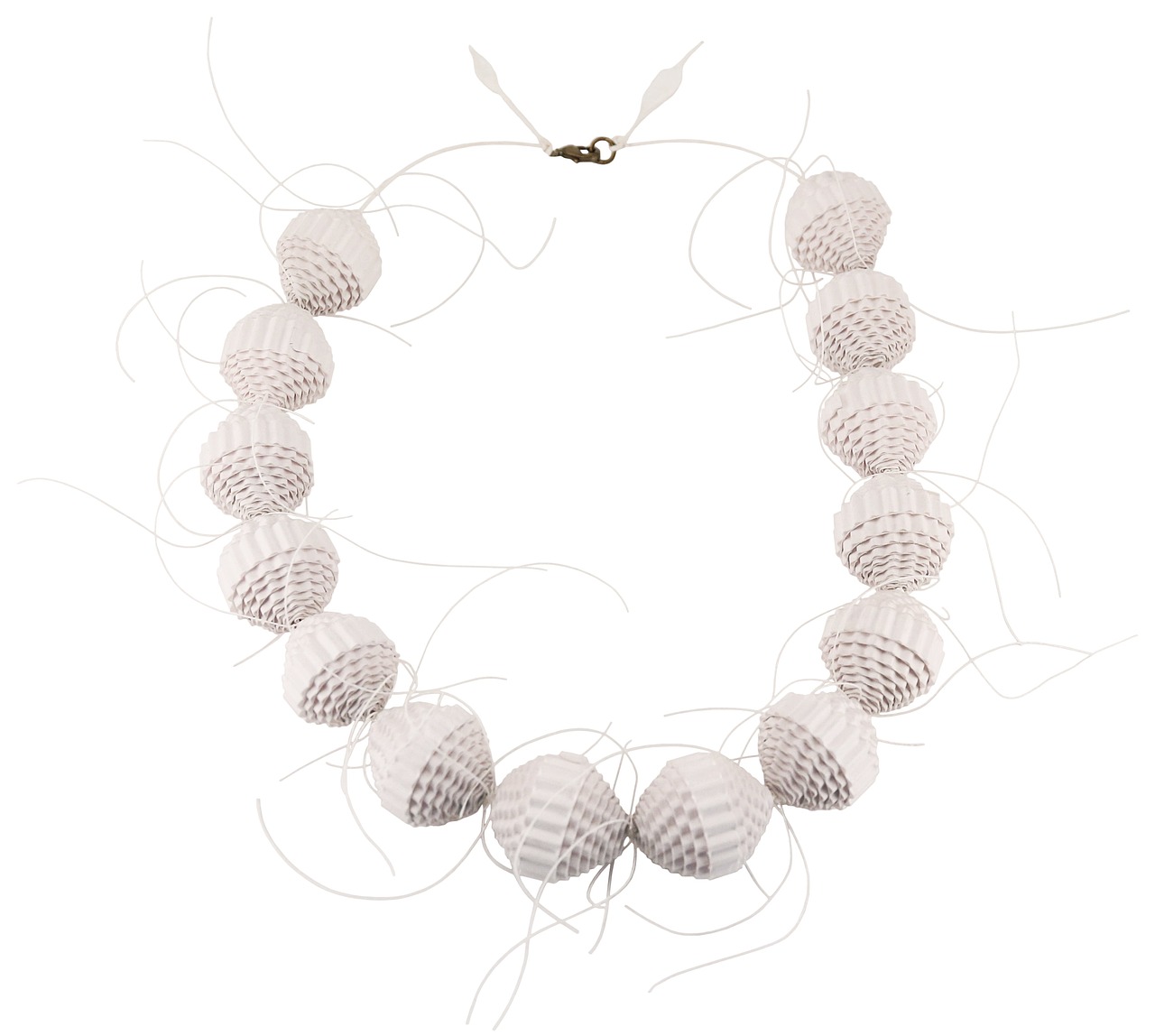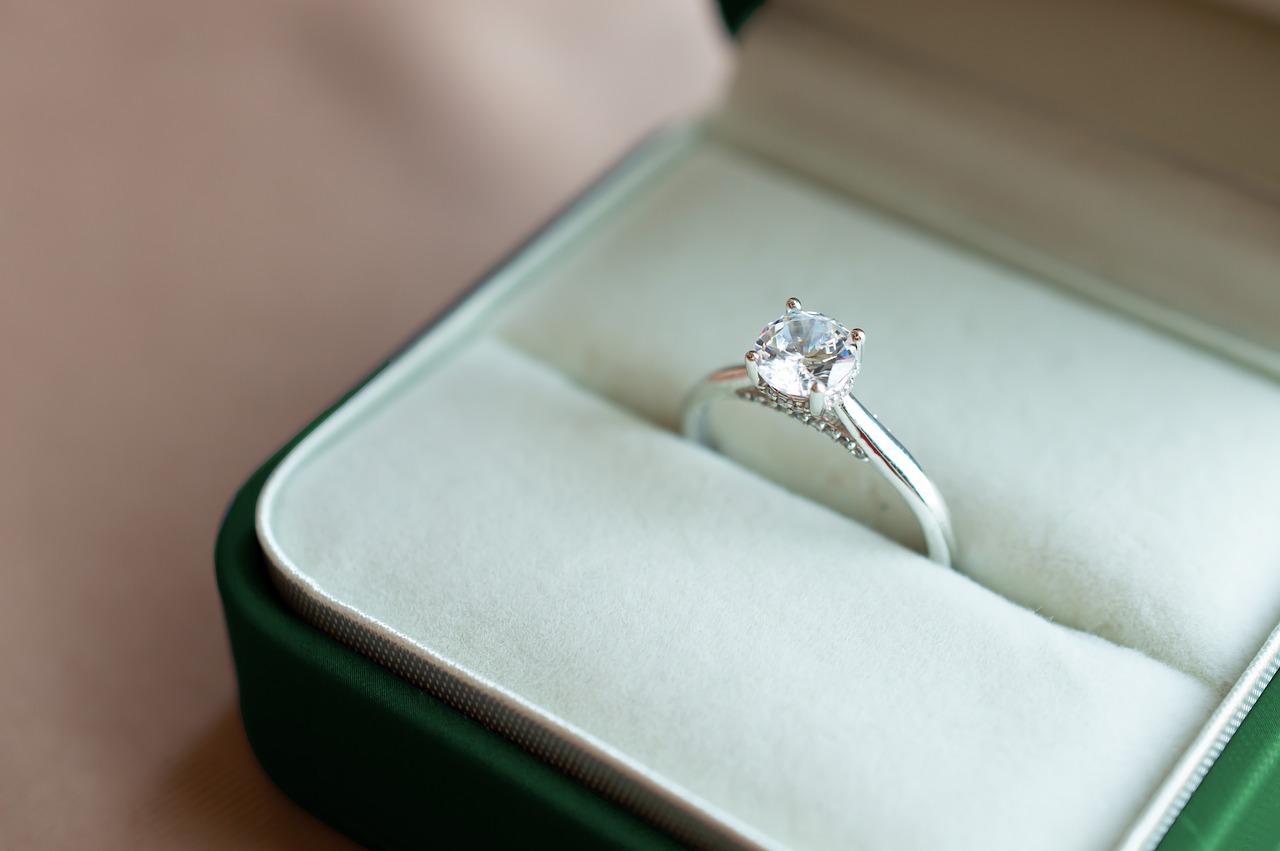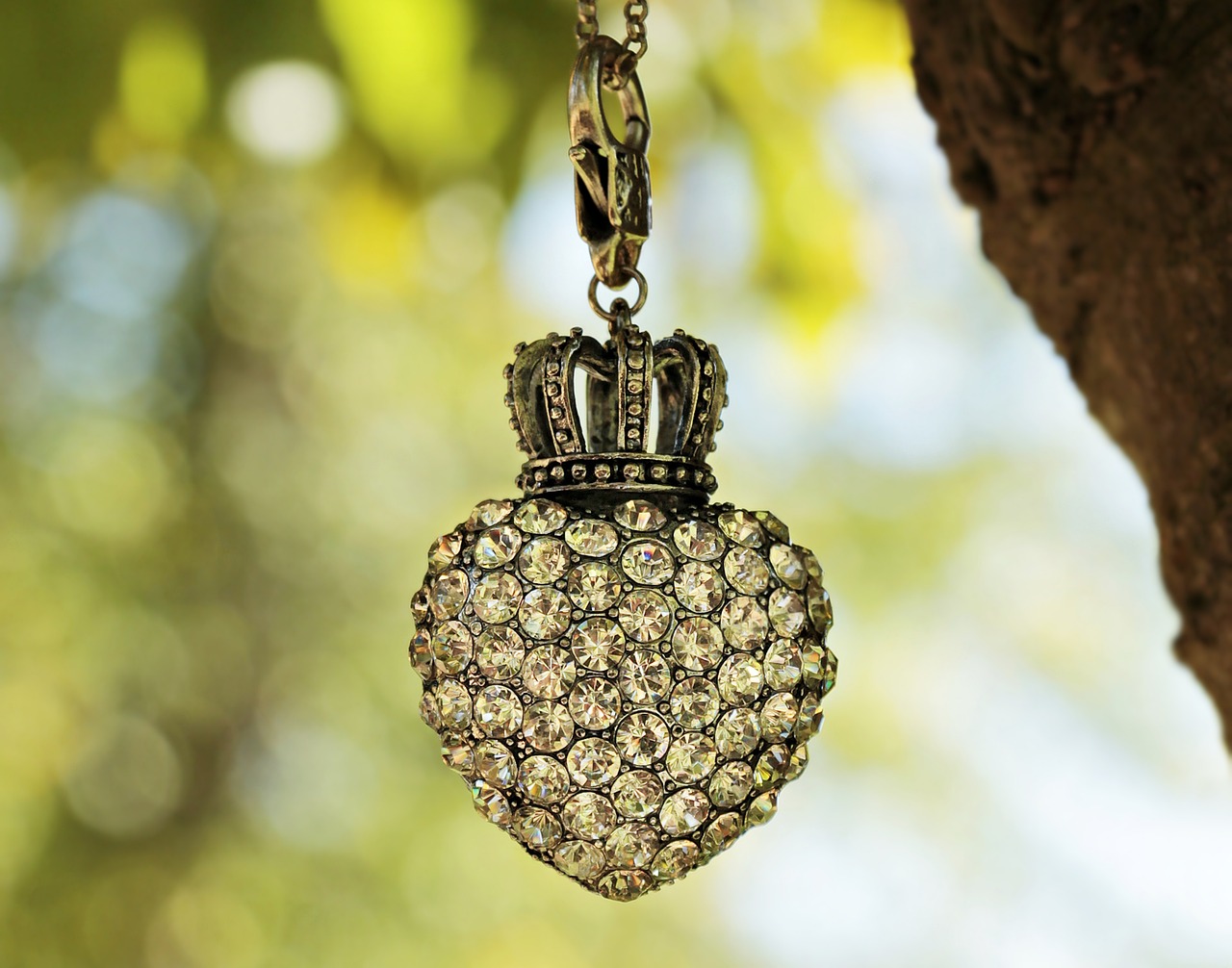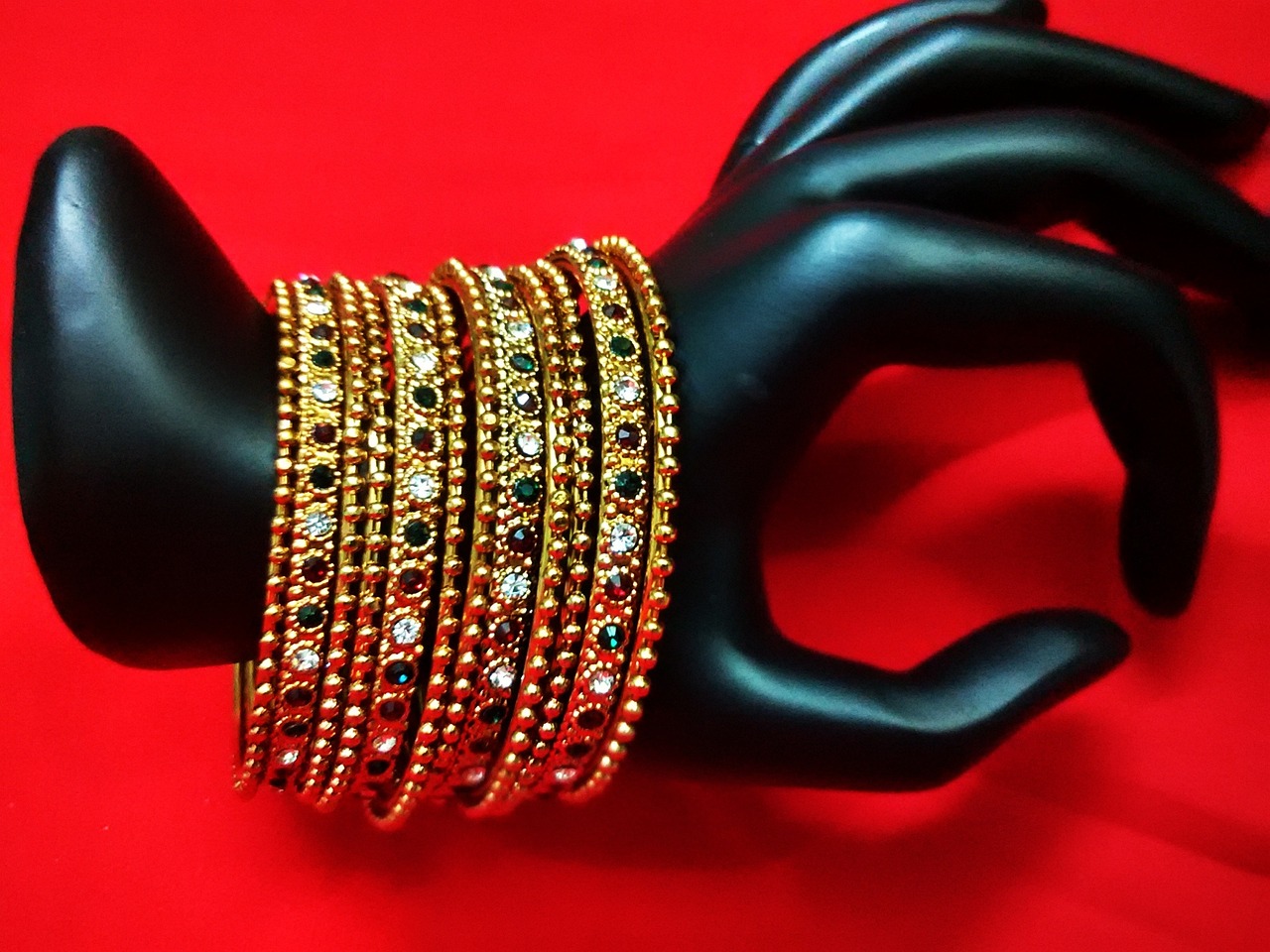This guide provides essential tips and insights for discerning genuine jewelry from imitations, ensuring that buyers make informed decisions. Learn how to identify authenticity with confidence.
Understanding the primary indicators can help you assess jewelry authenticity. Key features include metal purity, craftsmanship, and hallmarking, which are essential for determining if a piece is genuine. Here are some important aspects to consider:
- Metal Purity: Look for markings that indicate the metal’s quality, such as 14K for gold or 925 for sterling silver.
- Craftsmanship: Genuine jewelry often exhibits superior craftsmanship, including smooth finishes and precise settings.
- Hallmarks: Recognizable symbols or stamps can validate the origin and quality of the piece.
Hallmarks and stamps serve as vital authenticity markers. Knowing what to look for can help you identify the metal type and quality, making it easier to distinguish between real and fake jewelry.
- Understanding Hallmarks: Different hallmarks signify various standards of purity and origin. Familiarizing yourself with these markings can provide insight into the jewelry’s authenticity and value.
- Country of Origin: Hallmarks can also indicate where the jewelry was made, reflecting the craftsmanship standards associated with different regions.
Performing simple tests at home can help you assess jewelry authenticity without professional tools. Techniques such as magnet tests and acid tests can provide immediate insights into the piece’s composition.
- Magnet Test: Most genuine gold and silver jewelry will not be magnetic, while fake items often are.
- Acid Test: By applying a small amount of acid to the jewelry, you can observe reactions that indicate whether the metal is real or fake.
Identifying genuine gemstones requires knowledge of their characteristics. Understanding factors like clarity, cut, and color can help you distinguish real stones from synthetic or imitation ones.
- Signs of Real Gemstones: Real gemstones often exhibit unique characteristics such as inclusions and natural variations.
- Using a Jeweler’s Loupe: This tool allows for close examination of gemstones, helping you spot imperfections indicative of authenticity.
Documentation, such as certificates of authenticity, plays a crucial role in verifying jewelry. Understanding the significance of these documents can enhance your purchasing confidence.
- What to Look for in a Certificate: A legitimate certificate should include details about the jewelry’s specifications, including metal type and gemstone quality.
- Verifying Documentation: Checking the issuing authority and ensuring it aligns with the jewelry’s characteristics can safeguard against potential scams.
Being aware of common scams helps protect buyers from fraudulent jewelry sales. Familiarizing yourself with typical deceptive practices can enhance your purchasing experience.
- Spotting Fake Online Listings: Be cautious of listings with overly low prices and vague descriptions.
- Signs of a Fake Seller: Lack of contact information and poor reviews are red flags.
Choosing reputable sources is essential for purchasing authentic jewelry. Knowing where to shop can significantly increase your chances of acquiring genuine pieces.
- Trusted Retailers: Researching established names often leads to a reputation for quality and reliability.
- Using Online Reviews: These can provide valuable insights into a seller’s reputation.
If you suspect that you’ve purchased fake jewelry, knowing the steps to take can help you resolve the situation. Understanding your rights and options is essential.
- Approaching the Seller: Calmly present your concerns to facilitate a resolution.
- Seeking Legal Advice: In cases of significant financial loss, understanding your rights can empower you to take appropriate action.
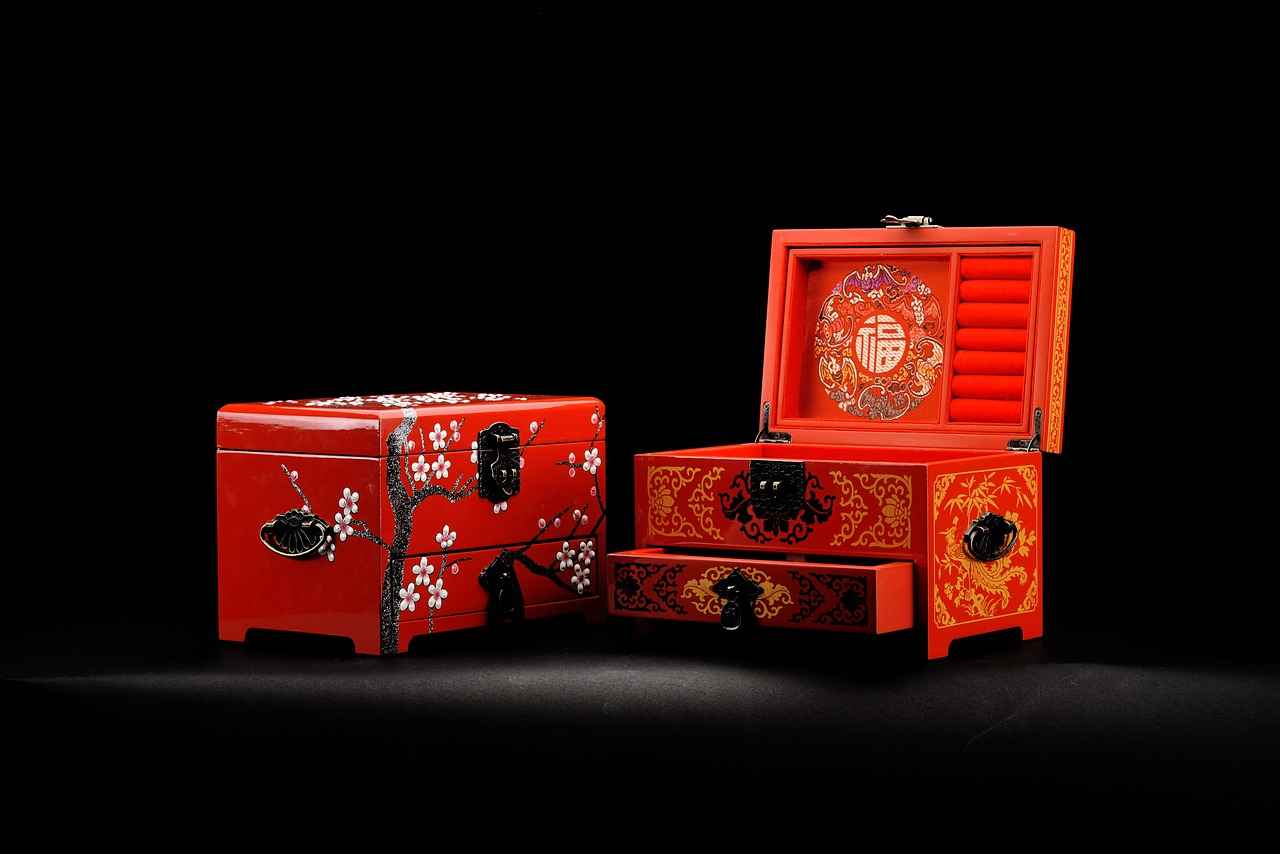
What Are the Key Indicators of Real Jewelry?
When it comes to purchasing jewelry, understanding the key indicators of authenticity is crucial for making informed decisions. Knowing how to identify real jewelry can save you from costly mistakes and ensure that your investment is worthwhile. This guide will delve into the essential features to look for, helping you differentiate between genuine pieces and imitations.
To accurately assess the authenticity of jewelry, you should focus on three primary indicators: metal purity, craftsmanship, and hallmarking. Each of these elements plays a significant role in determining whether a piece is genuine or fake.
- Metal Purity: The purity of the metal used in jewelry is a critical factor. High-quality pieces will often be stamped with purity marks, such as 14K for gold or 925 for sterling silver. These markings indicate the percentage of precious metal in the alloy, helping you understand the value of the piece.
- Craftsmanship: Genuine jewelry typically exhibits superior craftsmanship. Look for details such as smooth finishes, secure settings for gemstones, and consistent patterns. In contrast, fake jewelry may have rough edges, loose stones, or uneven surfaces.
- Hallmarking: Hallmarks are official stamps that provide important information about the jewelry, including its origin and metal content. Familiarizing yourself with common hallmarks can be invaluable in assessing authenticity. For example, British hallmarks include a series of symbols that indicate the maker, the year of manufacture, and the metal quality.
Understanding how to examine hallmarks and stamps is essential for verifying authenticity. When inspecting a piece, look for the hallmark’s location, which is often found on the inner band of rings or the clasp of necklaces. Ensure that the hallmark is clear and not obscured by dirt or tarnish.
- Use a magnifying glass to closely inspect the hallmark.
- Research hallmark databases to match the symbols with known manufacturers.
- Pay attention to the quality of the engraving; genuine hallmarks will be crisp and well-defined.
If you’re unsure about the authenticity of your jewelry, there are simple tests you can perform at home to gain more insight.
- Magnet Test: Most genuine gold and silver jewelry will not be magnetic. If your piece sticks to a magnet, it is likely not made of precious metal.
- Acid Test: This test involves applying a small drop of acid to the jewelry. Depending on the reaction, you can determine the metal’s purity. Ensure you follow safety precautions when conducting this test.
Documentation, such as certificates of authenticity, is vital in verifying jewelry. A legitimate certificate should provide detailed information about the piece, including its specifications and appraised value. Always check for the issuing authority and ensure that it aligns with the jewelry’s characteristics.
Being aware of common scams can protect you from fraudulent jewelry sales. Look for red flags, such as overly low prices, vague descriptions, and sellers with poor reviews. Always conduct thorough research before making a purchase.
Choosing reputable sources is essential for purchasing authentic jewelry. Research trusted retailers and brands known for their quality and reliability. Online reviews can provide valuable insights into a seller’s reputation, helping you make informed decisions.
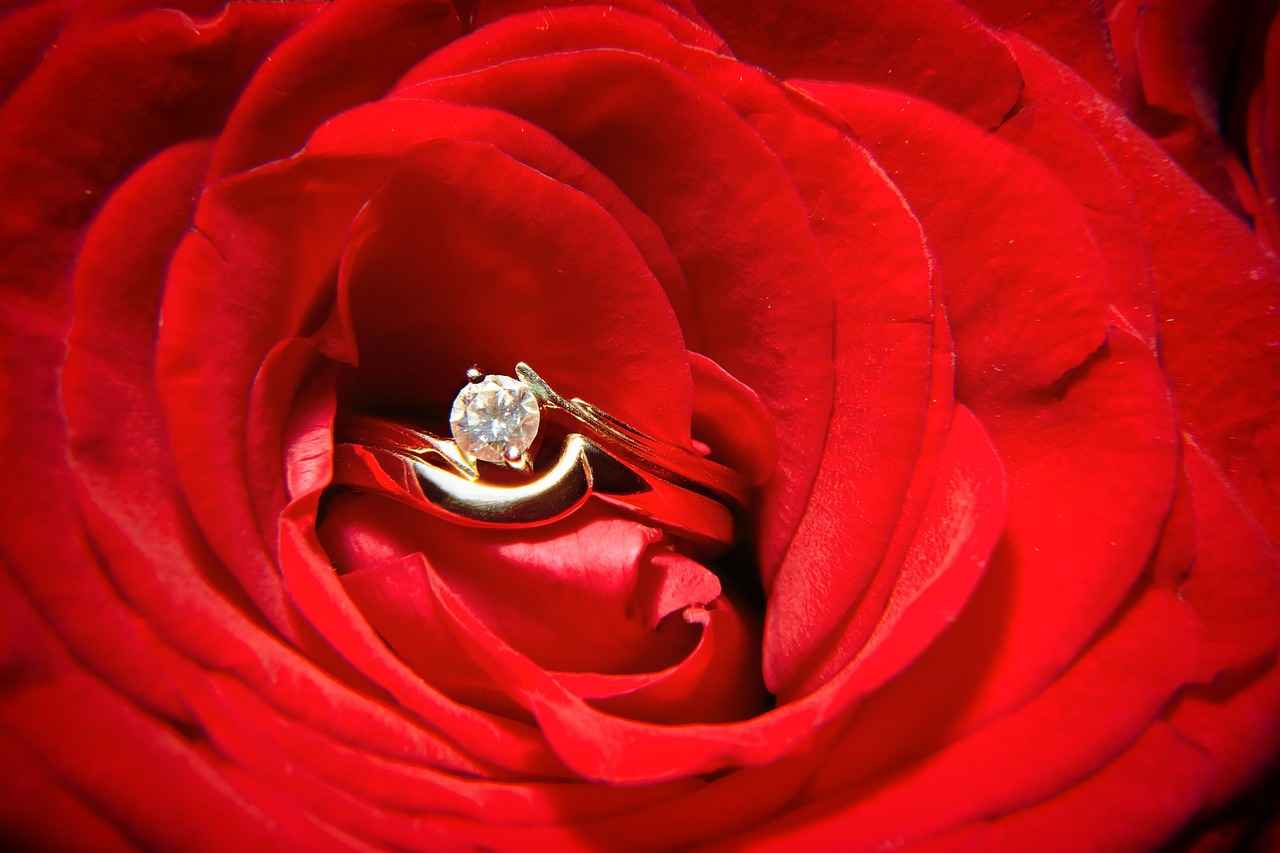
How to Examine Hallmarks and Stamps?
When it comes to assessing the authenticity of jewelry, hallmarks and stamps play a crucial role. These markings are not merely decorative; they provide vital information about the metal’s purity, origin, and sometimes even the maker. Understanding how to examine these indicators can significantly aid in differentiating between real and fake jewelry.
Hallmarks are official marks that are stamped onto precious metal items, indicating their purity and authenticity. Stamps, on the other hand, can include the manufacturer’s logo or the country of origin. Both serve as essential authenticity markers in the jewelry world.
Hallmarks provide crucial information about the metal type and its quality. For instance, a hallmark of 925 indicates that the piece is made of 92.5% silver, while 14K signifies that the item contains 58.3% gold. This knowledge is vital for buyers who want to ensure they are investing in genuine materials.
Hallmarks are typically found in inconspicuous areas of the jewelry, such as:
- On the inner band of rings
- On the clasp of necklaces and bracelets
- On the back of earrings
It’s essential to inspect these areas closely, as they can often be overlooked.
Different countries have their own hallmarking systems. For example:
| Country | Common Hallmarks |
|---|---|
| United States | 14K, 18K, 24K |
| United Kingdom | 375, 585, 750 |
| Europe | 925 (for sterling silver) |
Familiarizing yourself with these markings can provide insight into the jewelry’s authenticity and value.
To ensure that a hallmark is genuine, consider the following steps:
- Research the hallmark: Use online databases or reference books to check if the hallmark matches the claimed country and manufacturer.
- Consult a professional: If in doubt, seek the opinion of a certified jeweler who can verify the hallmark’s authenticity.
Many people assume that the presence of a hallmark guarantees authenticity. However, this is not always the case. Some counterfeit pieces may bear fake hallmarks. Therefore, it is crucial to assess the overall quality of the piece, including its craftsmanship and material.
While hallmarks are important, they are just one aspect of authenticity. Examine the jewelry for:
- Craftsmanship: Look for signs of quality workmanship, such as smooth edges and secure settings.
- Weight: Real precious metals will feel heavier than their fake counterparts.
By combining your knowledge of hallmarks with an evaluation of craftsmanship and weight, you can make more informed decisions when purchasing jewelry.
What Do Different Hallmarks Mean?
Understanding the significance of hallmarks in jewelry is essential for anyone looking to invest in authentic pieces. Hallmarks serve as indicators of quality, purity, and origin, providing crucial information that can help buyers make informed decisions. In this section, we will explore what different hallmarks mean, their importance, and how to interpret them effectively.
Hallmarks are official marks stamped on precious metals to certify their purity and authenticity. These markings are not just decorative; they serve as a guarantee that the jewelry meets specific standards set by regulatory bodies. Understanding these marks can help you determine the value and quality of the piece you are considering.
Different countries have their own hallmarking systems, which can vary significantly. Familiarizing yourself with these systems can enhance your ability to assess jewelry authenticity. Here are some common hallmark categories:
- Metal Purity Marks: These indicate the percentage of precious metal present. For example, 925 signifies sterling silver, while 750 indicates 18K gold.
- Country of Origin Marks: These marks reveal where the jewelry was manufactured. For instance, a lion passant indicates British origin, while a eagle signifies French origin.
- Maker’s Marks: These are unique symbols or initials that identify the jeweler or manufacturer. Recognizing these can add to the piece’s provenance.
Metal purity marks are crucial for determining the quality of your jewelry. For example:
| Mark | Description |
|---|---|
| 925 | Indicates sterling silver (92.5% silver content) |
| 750 | Represents 18K gold (75% gold content) |
| 585 | Denotes 14K gold (58.5% gold content) |
Recognizing these marks can significantly impact your purchasing decisions and help ensure you are getting what you pay for.
Country of origin hallmarks provide insight into the craftsmanship and standards associated with different regions. For example, jewelry marked with a British hallmark is typically subject to rigorous testing and quality standards. In contrast, pieces from other regions may not adhere to the same regulations.
Common country marks include:
- United Kingdom: A lion passant indicates sterling silver, while a crown represents gold.
- Italy: A tortoise signifies high-quality gold.
- France: An eagle head indicates gold, while a crab signifies silver.
When evaluating jewelry, it’s essential to verify the hallmarks. Here are some steps to follow:
1. Examine the jewelry closely for hallmarks.2. Use a magnifying glass to read small or worn marks.3. Cross-reference the marks with reputable online databases or hallmark guides.4. Consult a professional jeweler if you are unsure.
By understanding and interpreting these hallmarks, you can gain valuable insights into the authenticity and value of your jewelry. This knowledge not only enhances your purchasing confidence but also helps you appreciate the artistry and craftsmanship behind each piece.
Understanding Metal Purity Marks
When it comes to purchasing jewelry, understanding metal purity marks is essential for ensuring that you are investing in a quality piece. These marks, such as 14K for gold or 925 for sterling silver, indicate the percentage of precious metal contained within the item. Recognizing these markings can significantly influence your buying decisions and help you avoid counterfeit products.
Metal purity marks are standardized stamps that indicate the purity of precious metals in jewelry. These marks are typically found on the inner part of rings, clasps, or other inconspicuous areas of a piece. Understanding these marks can help you determine the value and quality of the jewelry you are considering.
Knowing the metal purity of your jewelry is crucial for several reasons:
- Value Assessment: Higher purity marks generally indicate a more valuable piece. For example, 24K gold is pure gold, while 14K gold contains only 58.3% gold.
- Durability: Lower purity metals may be more durable and resistant to scratches and tarnishing, making them more suitable for everyday wear.
- Allergen Awareness: Some metals, such as nickel, can cause allergic reactions. Knowing the purity can help you avoid these issues.
Here are some of the most common metal purity marks you might encounter:
| Mark | Description |
|---|---|
| 24K | Pure gold, 99.9% gold content. |
| 18K | 75% gold content, commonly used in fine jewelry. |
| 14K | 58.3% gold content, popular for its balance of quality and affordability. |
| 10K | 41.7% gold content, often used for budget-friendly jewelry. |
| 925 | Sterling silver, 92.5% silver content. |
To identify metal purity marks, you can:
- Inspect the Jewelry: Look for stamps on the inside of rings or clasps of necklaces and bracelets.
- Consult a Jeweler: If you’re unsure about a mark, a professional jeweler can help you verify it.
- Research Online: Many resources are available that provide images and descriptions of metal purity marks.
If you come across a piece of jewelry that lacks a purity mark, it’s advisable to be cautious. Here are steps you can take:
- Seek Professional Appraisal: Have the piece evaluated by a certified appraiser to determine its authenticity and value.
- Perform Basic Tests: Conduct simple tests, such as a magnet test, to check for authenticity.
- Avoid Purchase: If there is no mark and you cannot verify the metal, it may be best to avoid making a purchase.
In summary, understanding metal purity marks is essential for any jewelry buyer. These markings not only indicate the quality and value of the piece but also help you make informed decisions when investing in jewelry. Always take the time to inspect and verify these marks to ensure you are getting a genuine product.
Country of Origin Hallmarks
The jewelry industry is rich with tradition and history, and one of the most significant ways to determine the authenticity and origin of a piece is through its hallmarks. Hallmarks are official marks or stamps that indicate various details about the jewelry, including the country of origin, metal purity, and the manufacturer. Understanding these marks can significantly enhance your ability to assess the quality and authenticity of jewelry.
Hallmarks serve as a form of identification for jewelry, providing essential information about its composition and craftsmanship. They can indicate where the jewelry was made, which is crucial for understanding the standards of authenticity and craftsmanship associated with different regions. For instance, pieces made in countries with a strong reputation for jewelry making, like Italy or France, often adhere to higher standards of quality and design.
Reading hallmarks can seem daunting, but it is quite straightforward once you know what to look for. Typically, hallmarks will include:
- Metal purity marks: Indicate the percentage of precious metal in the piece.
- Country of origin: Identifies where the jewelry was produced.
- Manufacturer’s mark: Shows who made the piece, often a recognized brand or artisan.
Different countries have established their own hallmarking systems, which can be a valuable resource for buyers. Here are some examples:
| Country | Common Hallmarks | Significance |
|---|---|---|
| United Kingdom | Lion passant (for sterling silver), Gold standard marks (like 375, 585, 750) | Indicates metal purity and authenticity; regulated by the UK Assay Offices. |
| Italy | “925” for sterling silver, “750” for 18K gold | Represents high-quality craftsmanship; Italian jewelry is known for its artistry. |
| France | “Minerva” for silver, “Eagle” for gold | Symbolizes quality and adherence to strict French jewelry standards. |
Understanding the origin of a piece can provide insights into its value and craftsmanship. For example, jewelry from regions known for their artisanal techniques often carries a higher value due to the skills and traditions involved in its creation. Moreover, knowing where a piece originates can also help in verifying its authenticity, as certain marks are exclusive to specific regions.
To ensure that the hallmarks on your jewelry are legitimate, consider the following steps:
- Research: Familiarize yourself with hallmarking systems of different countries.
- Consult Experts: If unsure, seek advice from a professional jeweler or appraiser.
- Use Online Resources: Various websites provide databases of hallmark images and descriptions for reference.
By understanding and examining hallmarks, you can better ascertain the authenticity and quality of your jewelry. This knowledge not only enhances your purchasing confidence but also enriches your appreciation of the craftsmanship behind each piece.
How to Evaluate Craftsmanship?
When it comes to assessing the authenticity of jewelry, craftsmanship plays a crucial role. The quality of craftsmanship can often be the deciding factor in determining whether a piece is genuine or merely a replica. By closely examining the intricate details of a piece, such as its settings, finishes, and overall construction, you can gain valuable insights into its authenticity.
To effectively evaluate craftsmanship, consider the following key aspects:
- Attention to Detail: Genuine jewelry often showcases meticulous attention to detail. Look for precise settings, smooth finishes, and consistent patterns. In contrast, replicas may exhibit uneven edges, poorly aligned stones, or rough surfaces.
- Quality of Materials: Authentic jewelry is typically made from high-quality materials. Assess the weight and feel of the piece; genuine metals like gold and silver are denser and more substantial than their counterfeit counterparts.
- Construction Techniques: Familiarize yourself with various jewelry-making techniques. For instance, hand-crafted pieces often display unique characteristics that mass-produced items lack. Look for signs of soldering, engraving, or hand-finishing that indicate skilled craftsmanship.
The settings and finishes of a piece can reveal a lot about its authenticity. Here’s how to evaluate them:
- Stone Settings: Examine how stones are set in the jewelry. Genuine pieces typically use prong or bezel settings that securely hold the gemstones. Loose or poorly set stones can indicate a lack of quality.
- Finish Quality: The finish of the jewelry should be smooth and polished. Look for any signs of tarnishing, scratches, or irregularities, which may suggest inferior craftsmanship.
Understanding craftsmanship is not just about authenticity; it also relates to the value of the piece. High-quality craftsmanship enhances the overall appeal and longevity of jewelry, making it more desirable to collectors and buyers alike. A well-crafted piece can retain or even increase its value over time, while poorly crafted replicas often depreciate significantly.
To deepen your understanding of jewelry craftsmanship, consider the following resources:
- Jewelry Workshops: Participating in workshops can provide hands-on experience and insights into the craftsmanship behind jewelry making.
- Books and Online Courses: Numerous books and online courses are available that cover various aspects of jewelry design and craftsmanship.
- Consulting Experts: When in doubt, consulting with a professional jeweler or appraiser can provide clarity and expert opinions on the craftsmanship of specific pieces.
In conclusion, evaluating craftsmanship is essential for determining the authenticity of jewelry. By paying close attention to the details and understanding the significance of quality construction, you can confidently discern genuine pieces from imitations. Whether you are a seasoned collector or a first-time buyer, knowing what to look for can enhance your purchasing experience and ensure that you invest in quality jewelry.

What Tests Can You Perform at Home?
When it comes to assessing the authenticity of jewelry, performing simple tests at home can be both practical and enlightening. Without the need for professional tools, you can utilize various techniques to gain immediate insights into the composition and quality of your jewelry pieces. This guide will delve into some effective tests, including the magnet test and the acid test, which can help you determine whether your jewelry is genuine or not.
Understanding how to conduct basic tests on your jewelry can empower you as a buyer. Here are some key methods:
- Magnet Test: This is one of the simplest tests you can perform. Most genuine precious metals, such as gold and silver, are not magnetic. If your jewelry is attracted to a magnet, it is likely made of base metals or is a counterfeit. However, keep in mind that some gold-plated items may contain magnetic components underneath the surface.
- Acid Test: The acid test is a more definitive method for assessing the authenticity of precious metals. By applying a small drop of acid to a discreet area of the jewelry, you can observe how the metal reacts. Different metals will show specific reactions, helping you identify whether the piece is real gold, silver, or platinum. Always follow safety precautions when using acids.
- Water Test: This test is particularly useful for gemstones. Real gemstones tend to be denser and will sink in water, while fake stones may float. This is a quick and easy way to check the authenticity of your gemstones.
- Sound Test: Tapping your jewelry can also reveal its authenticity. Genuine metals produce a distinct sound that differs from base metals. If you have multiple pieces, compare their sounds to identify potential fakes.
The magnet test is straightforward and requires no special equipment. Simply take a strong magnet, such as a refrigerator magnet, and bring it close to your jewelry. If the piece sticks to the magnet, it is likely not made of precious metal. Remember, this test is not foolproof, as some non-magnetic items may still be fake.
The acid test is a bit more complex but can yield definitive results. You will need a testing kit that includes small bottles of acid specifically designed for different metals. Here’s how to perform the test:
- Identify a small, inconspicuous area on the jewelry for testing.
- Apply a drop of the acid to the area and observe the reaction.
- If the metal changes color or dissolves, it is likely not genuine.
Always conduct this test in a well-ventilated area and wear protective gear, as the acids can be harmful.
Performing these tests at home can save you time and money, allowing you to assess the authenticity of your jewelry before making a larger investment. By using these simple methods, you can gain confidence in your purchasing decisions and avoid falling victim to counterfeit products.
In conclusion, understanding how to perform basic tests at home can significantly enhance your ability to discern genuine jewelry from imitations. Always remember to use caution when conducting tests, and if in doubt, consult with a professional jeweler for a more thorough evaluation.
Magnet Test: Is Your Jewelry Magnetic?
The magnet test is a simple yet effective method for assessing the authenticity of jewelry. This test can quickly indicate whether a piece is made of precious metals like gold or silver, which are typically non-magnetic. Understanding how to perform this test and interpret the results can save you time and money when shopping for jewelry.
Many buyers are unaware that genuine gold and silver jewelry will not be attracted to a magnet. This is because these precious metals are not magnetic. In contrast, many fake jewelry pieces are made from base metals or alloys that contain iron, making them magnetic. Thus, if a piece of jewelry is drawn to a magnet, it is often a strong indication that it is not authentic.
- Gather Your Materials: You will need a strong magnet, which can be found in household items like refrigerator magnets or purchased from a hardware store.
- Test the Jewelry: Hold the magnet close to the jewelry piece without touching it. Observe if the jewelry moves towards the magnet.
- Analyze the Results: If the piece is attracted to the magnet, it is likely made of a non-precious metal. If it remains unaffected, it may be genuine.
While the magnet test is a useful initial check, it is not foolproof. Some high-quality fake jewelry can be crafted from non-magnetic materials that mimic the appearance of precious metals. Additionally, some genuine pieces may contain magnetic components, such as clasps or embellishments. Therefore, it is essential to use the magnet test in conjunction with other methods of verification.
To ensure a thorough evaluation of your jewelry, consider combining the magnet test with other authenticity checks:
- Visual Inspection: Examine the piece for signs of quality craftsmanship, such as smooth finishes and secure settings.
- Hallmarks and Stamps: Look for any stamps or hallmarks that indicate the metal’s purity and origin.
- Acid Test: Conduct an acid test to confirm the metal’s composition, providing a more definitive answer regarding authenticity.
If you remain uncertain about the authenticity of your jewelry after performing the magnet test and other checks, it may be wise to consult a professional jeweler. They can provide expert insights and conduct more advanced tests to verify the piece’s authenticity. Investing in a professional assessment can be especially important for high-value items.
In summary, the magnet test serves as a quick and easy preliminary check for determining whether jewelry is made of precious metals. While it is not definitive, it can help you make more informed decisions when purchasing jewelry. Always consider using multiple methods to verify authenticity and consult a professional when in doubt.
Acid Test: How Does It Work?
When it comes to assessing the authenticity of jewelry, one of the most reliable methods is the acid test. This simple yet effective technique can help determine the purity of precious metals, allowing buyers to make informed decisions.
The acid test is a straightforward procedure used to evaluate the purity of metals like gold, silver, and platinum. By applying a small amount of acid to the jewelry, you can observe specific reactions that indicate whether the metal is genuine or a counterfeit. This test is particularly useful for assessing older or unmarked pieces that may not have clear purity stamps.
To perform an acid test, you will need a testing kit that includes various acids, each corresponding to different metal purities. The process involves:
- Preparation: Start by cleaning the jewelry piece to remove any dirt or oils that may interfere with the test.
- Scratch Test: Using a testing stone, gently scratch the surface of the jewelry to create a small mark. This scratch will serve as a sample for the acid test.
- Application of Acid: Apply a drop of acid to the scratch. Observe the reaction closely.
The reaction of the acid with the metal will reveal its purity:
- No Reaction: If there is no change, the metal is likely genuine and of high purity.
- Color Change: A change in color or fizzing indicates a lower purity level or that the metal is not genuine.
- Discoloration: If the metal turns a different color, it may suggest that the piece is plated or made from a base metal.
While the acid test is effective, it is essential to take safety precautions:
- Wear Gloves: Protect your hands from acid exposure.
- Use Eye Protection: Safety goggles can prevent splashes from reaching your eyes.
- Work in a Ventilated Area: Ensure good airflow to avoid inhaling harmful fumes.
While the acid test is a valuable tool, it is not without limitations. It can only determine the presence of precious metals and their purity but cannot identify the specific alloy composition. Additionally, some metals may react similarly to acid, leading to potential misinterpretations. Therefore, it is advisable to combine this test with other methods, such as examining hallmarks and conducting a magnet test, for a comprehensive assessment.
If you’re uncertain about conducting the acid test yourself, or if the jewelry piece holds significant value, consider seeking help from a professional jeweler. They have the expertise and tools necessary to perform a thorough evaluation.
In conclusion, the acid test is a practical method for assessing jewelry authenticity. By understanding how to perform the test and interpret its results, you can gain valuable insights into the quality and value of your jewelry, ensuring that you make informed purchasing decisions.
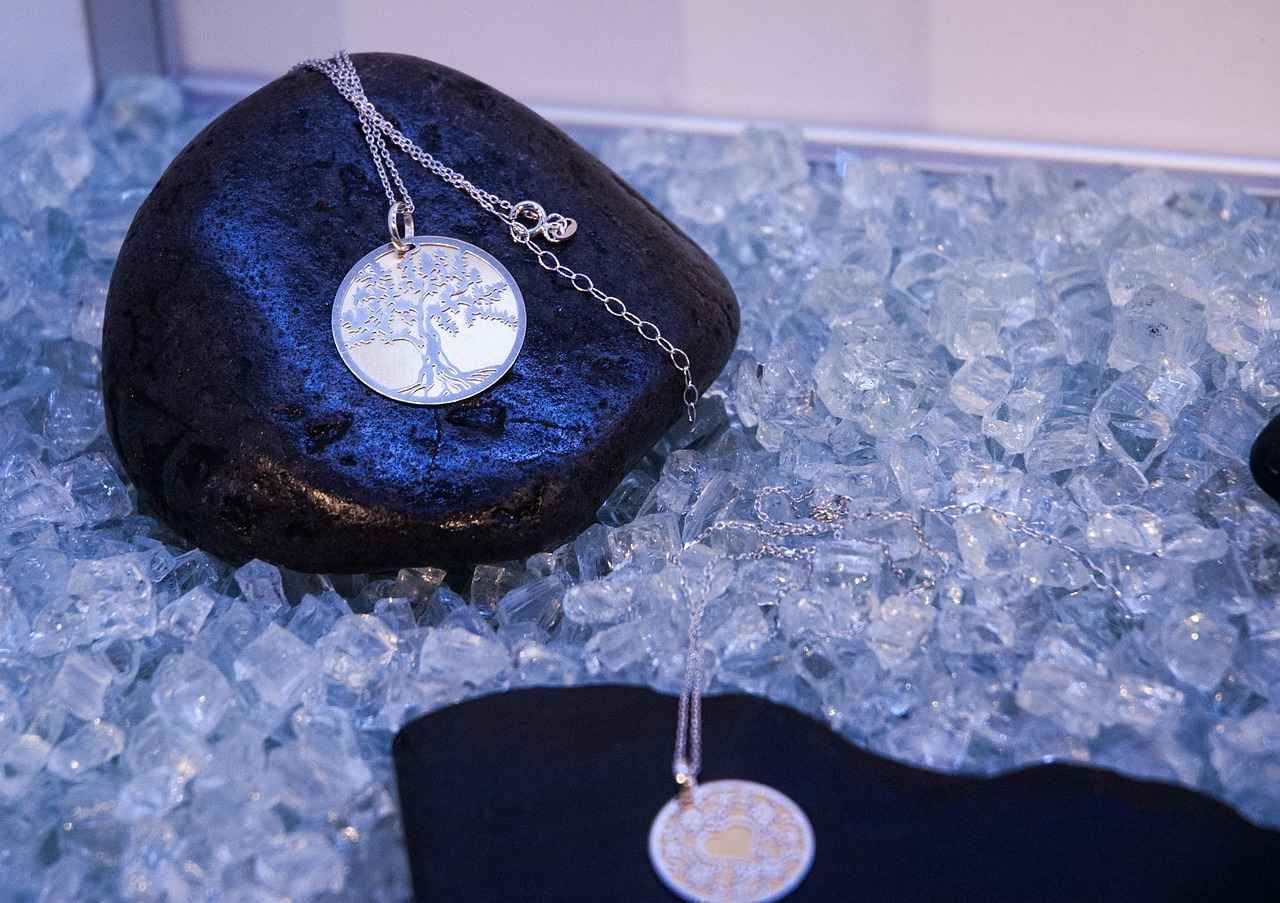
How to Identify Gemstone Authenticity?
When it comes to purchasing gemstones, the ability to identify their authenticity is crucial. Genuine gemstones not only carry intrinsic value but also possess unique characteristics that set them apart from synthetic or imitation stones. This guide will delve into the essential factors to consider when evaluating gemstones, ensuring that you make informed decisions.
To determine the authenticity of a gemstone, it is important to understand the key characteristics that define it. These include:
- Clarity: Genuine gemstones often contain inclusions or natural imperfections that are not present in synthetic stones. These inclusions can be tiny bubbles, minerals, or other natural elements.
- Cut: The way a gemstone is cut can significantly affect its appearance and value. Authentic gemstones are typically cut with precision to enhance their natural beauty.
- Color: The color of a gemstone can be a strong indicator of its authenticity. While synthetic stones can be made in various colors, genuine stones often exhibit subtle variations and hues that are characteristic of their natural formation.
A jeweler’s loupe is an invaluable tool for closely examining gemstones. Here’s how to effectively use it:
- Hold the loupe close to your eye and bring the gemstone closer until it comes into focus.
- Inspect the stone for inclusions, which can indicate authenticity. Genuine stones often have unique internal features.
- Look for signs of wear or scratches, as these can add to the stone’s character and value.
Identifying synthetic or imitation gemstones can save you from making a poor investment. Here are some signs to watch for:
- Perfect Clarity: If a gemstone appears flawless, it may be synthetic. Most natural stones have some level of inclusions.
- Uniform Color: Synthetic stones often have a more uniform color than genuine stones, which exhibit natural variations.
- Price Point: If the price seems too good to be true, it likely is. Genuine gemstones typically come with a higher price tag due to their rarity.
When purchasing gemstones, look for a certificate of authenticity from a reputable gemological laboratory. A legitimate certificate should include:
- Details of the gemstone: Information about the type, cut, and color.
- Grading reports: Assessments of clarity, carat weight, and other characteristics.
There are several simple tests you can perform at home to help verify the authenticity of gemstones:
- Water Test: Genuine gemstones are typically denser than glass. Fill a glass with water and drop the stone in; if it sinks, it’s likely real.
- Scratch Test: Use a piece of glass to scratch the surface of the stone. If it scratches easily, it may not be genuine.
By understanding these key characteristics and employing effective inspection techniques, you can confidently identify genuine gemstones. Remember, knowledge is your best ally when it comes to making informed purchases in the world of gemstones.
What Are the Signs of Real Gemstones?
When it comes to purchasing gemstones, understanding their authenticity is crucial. Many buyers often find themselves confused by the vast array of options available in the market. Real gemstones not only hold aesthetic value but also possess unique characteristics that set them apart from synthetic or imitation stones. By learning to identify these signs, you can make informed decisions and ensure that you are investing in genuine pieces.
Real gemstones often exhibit distinctive features that can help you differentiate them from fakes. Here are some key signs to look for:
- Inclusions: Authentic gemstones frequently contain natural inclusions or imperfections. These can be tiny bubbles, minerals, or other materials embedded within the stone. Such inclusions are unique to each gemstone and can often be seen under magnification.
- Color Variations: Natural stones typically show slight variations in color. Unlike synthetic gemstones, which often have a uniform hue, real stones may display subtle gradients or uneven coloring that adds to their charm and uniqueness.
- Weight: Real gemstones usually have a denser weight compared to synthetic counterparts. When evaluating a gemstone, consider its heft; if it feels unusually light, it may be a fake.
- Temperature: Genuine gemstones tend to feel cool to the touch initially. If a stone feels warm right away, it could indicate that it is made from plastic or synthetic material.
- Brilliance and Sparkle: While both real and synthetic gemstones can be cut to sparkle, the way they reflect light can differ. Authentic gemstones often exhibit a more complex play of light, known as fire, which may not be present in imitations.
A jeweler’s loupe is an essential tool for anyone serious about identifying real gemstones. This magnifying glass allows you to closely examine the stone for inclusions, color variations, and other characteristics that indicate authenticity. When using a loupe, look for:
- Natural Flaws: Real gemstones will have imperfections that are not present in synthetics.
- Cut Quality: The craftsmanship of the cut can also be a telling sign. A poorly cut stone may indicate a fake.
When purchasing gemstones, having proper documentation is vital. Certificates of authenticity not only verify the gemstone’s legitimacy but also provide information about its quality, such as cut, clarity, and carat weight. Always ensure that the certificate comes from a reputable gemological laboratory.
As the demand for gemstones grows, so do fraudulent practices. Be wary of:
- Unrealistically Low Prices: If a deal seems too good to be true, it probably is.
- Lack of Certification: Genuine sellers will always provide documentation. If a seller cannot offer this, consider it a red flag.
By understanding these signs and employing the right tools, you can confidently navigate the world of gemstones and ensure that your purchases are authentic. Remember, investing in real gemstones not only enhances your collection but also provides lasting value.
Using a Jeweler’s Loupe for Inspection
When it comes to evaluating the authenticity of gemstones, a jeweler’s loupe is an invaluable tool. This small, handheld magnifying glass allows for a close-up examination of gemstones, revealing details that are often invisible to the naked eye. In this section, we will explore how to effectively use a jeweler’s loupe and what to look for when inspecting gemstones.
A jeweler’s loupe provides high magnification—typically between 10x to 30x—allowing you to scrutinize the surface and internal characteristics of gemstones. This level of detail is crucial for identifying imperfections, inclusions, and other features that indicate a stone’s authenticity.
- Lighting: Ensure you have adequate lighting. Natural light works best, but if that’s not available, use a bright LED light.
- Distance: Hold the loupe close to your eye and bring the gemstone closer until it comes into focus. This may take a bit of practice.
- Stability: Keep your hands steady to avoid blurriness. You might want to rest your elbow on a flat surface for support.
When using a jeweler’s loupe, pay attention to the following characteristics:
- Inclusions: Natural gemstones often contain inclusions or internal flaws. These can be air bubbles, minerals, or other imperfections. Synthetic stones typically have fewer inclusions.
- Color Zoning: Look for variations in color within the gemstone. Natural stones often exhibit color zoning, while synthetic stones may have a uniform color.
- Surface Quality: Check for scratches, chips, or other surface imperfections. A high-quality gemstone should have a smooth surface.
- Cut Quality: Examine the cut of the gemstone. A well-cut stone will reflect light beautifully, while a poorly cut stone may appear dull.
Using a jeweler’s loupe can help you identify features that signify authenticity:
- Natural Patterns: Real gemstones often display unique patterns and irregularities that cannot be replicated in synthetics.
- Refraction: Observe how light interacts with the gemstone. Genuine stones will have a specific refractive index, which can be observed through the loupe.
- Faceting: Look at the facets of the gemstone. Well-cut stones will have sharp, clean edges and symmetrical facets.
While a jeweler’s loupe is a powerful tool, it does have its limitations. It may not identify all types of fakes, especially those that are expertly crafted. Additionally, some gemstones, like diamonds, require specialized equipment to assess their true quality. For a comprehensive evaluation, consider consulting a professional gemologist.
In conclusion, a jeweler’s loupe is an essential instrument for anyone looking to evaluate gemstones closely. By understanding how to use this tool effectively and knowing what to look for, you can significantly enhance your ability to discern between genuine and fake gemstones. This knowledge not only empowers you as a buyer but also enriches your appreciation of the intricate beauty of gemstones.
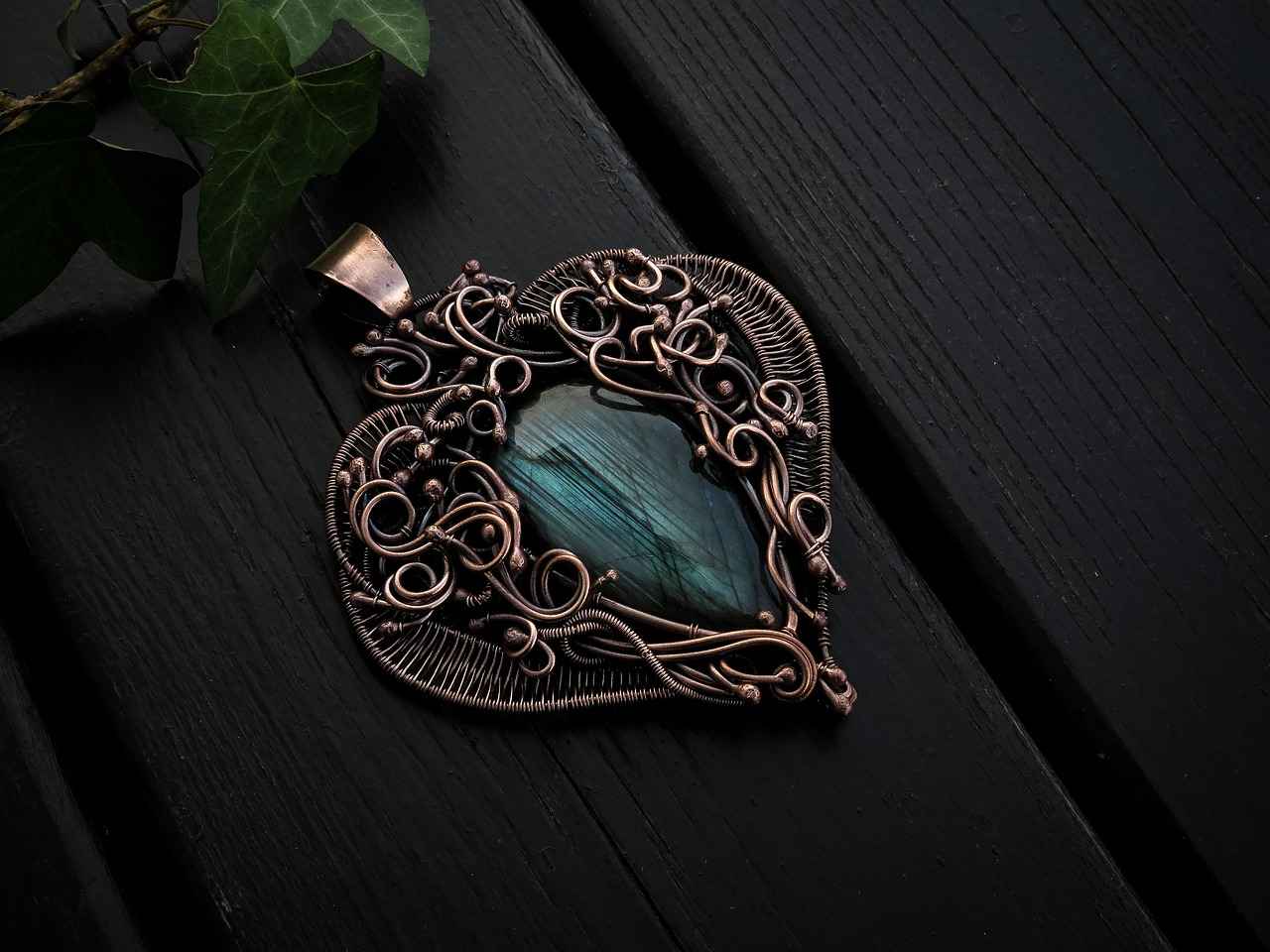
Why Is Documentation Important?
When purchasing jewelry, the importance of documentation cannot be overstated. Documents such as certificates of authenticity serve as crucial tools for verifying the legitimacy of a piece. These documents provide essential information that can significantly enhance your confidence as a buyer.
What Is a Certificate of Authenticity?
A certificate of authenticity is a formal document issued by a reputable source, typically a jeweler or gemologist, that verifies the quality and authenticity of a piece of jewelry. This certificate often includes details such as:
- Metal Type: The specific type of metal used, such as gold, silver, or platinum.
- Gemstone Quality: Information about any gemstones, including their cut, clarity, and carat weight.
- Appraised Value: The estimated market value of the jewelry based on its quality and materials.
Why Should You Trust Documentation?
Understanding the significance of these documents can not only enhance your purchasing confidence but also protect you from potential fraud. Without proper documentation, it becomes challenging to ascertain whether a piece is genuine or a mere imitation. A well-documented piece of jewelry typically comes from a trusted source, which adds an additional layer of security for buyers.
How to Verify the Authenticity of Documentation?
When presented with a certificate of authenticity, it’s essential to verify its legitimacy. Here are some steps to consider:
- Check the Issuing Authority: Ensure that the certificate comes from a recognized and reputable gemological laboratory or jeweler.
- Cross-Reference Information: Compare the details in the certificate with the actual jewelry piece. Look for matching metal types, gemstone details, and appraised values.
- Look for Security Features: Many legitimate certificates include security features such as holograms or unique serial numbers that can be verified.
What Are the Risks of Not Having Documentation?
Purchasing jewelry without proper documentation poses several risks:
- Increased Risk of Fraud: Without documentation, it becomes easier for sellers to misrepresent the quality and authenticity of their pieces.
- Difficulty in Resale: If you ever decide to sell your jewelry, having documentation is often a requirement for potential buyers, as it assures them of the piece’s authenticity.
- Limited Insurance Options: Many insurance companies require documentation to insure valuable jewelry. Without it, you may find it challenging to protect your investment.
How to Obtain Proper Documentation?
If you’re purchasing a piece of jewelry, ensure that you ask for its certificate of authenticity. Reputable jewelers will typically provide this documentation upon purchase. Additionally, if you are considering buying second-hand jewelry, consider taking the piece to a certified appraiser or gemologist who can verify its authenticity and provide the necessary documentation.
Conclusion
In summary, understanding the importance of documentation in the jewelry-buying process is critical. Certificates of authenticity not only enhance your confidence as a buyer but also serve as a safeguard against fraud. Always ensure that you verify the authenticity of the documentation to make informed purchasing decisions.
What Should You Look for in a Certificate?
When investing in jewelry, understanding the importance of documentation is crucial. A legitimate certificate serves as a vital assurance of authenticity and value. It not only provides peace of mind but also protects your investment. In this section, we will explore the essential elements to look for in a certificate to ensure that you’re making a wise purchase.
A comprehensive jewelry certificate should include several key details that validate its authenticity. These details are critical for buyers to understand the true value of their purchase. Here are the primary components:
- Metal Type: The certificate should clearly state the type of metal used, such as gold, silver, or platinum. This information is essential as it directly impacts the jewelry’s value.
- Gemstone Quality: If the piece includes gemstones, the certificate should specify their quality, including factors like cut, clarity, color, and carat weight. This information helps determine the authenticity and value of the stones.
- Appraised Value: An appraised value is a critical component of the certificate. This value should reflect a fair market price and is usually determined by a certified gemologist or appraiser.
- Certification Body: Look for the name of the issuing authority or laboratory. Reputable organizations, such as the Gemological Institute of America (GIA) or American Gem Society (AGS), provide reliable certifications.
Understanding what to check in a certificate is just as important as the details it contains. Here are some steps you can take to verify its authenticity:
- Cross-Check with the Issuer: Contact the certification body to confirm that the certificate is legitimate and corresponds with the jewelry in question.
- Look for Security Features: Genuine certificates often have security features, such as watermarks or holograms, that are difficult to replicate.
- Check for Consistency: Ensure that the details on the certificate match the jewelry’s characteristics, including the metal type and gemstone specifications.
Having proper documentation can significantly reduce the risk of falling victim to fraudulent purchases. By ensuring that the jewelry comes with a legitimate certificate, you are taking a proactive step towards safeguarding your investment. Here’s how:
- Establishing Provenance: A certificate can provide a history of the piece, helping to establish its provenance and authenticity.
- Supporting Resale Value: Genuine documentation can enhance the resale value of the jewelry, making it easier to sell in the future.
- Building Trust: A certificate from a reputable source builds trust between the buyer and seller, fostering a safer purchasing environment.
Buying jewelry without proper documentation can lead to various risks, including:
- Overpaying: Without an appraised value, you may end up paying more than the piece is worth.
- Counterfeit Products: The lack of a certificate increases the likelihood of purchasing counterfeit or imitation jewelry.
- Difficulty in Resale: Without documentation, reselling the piece may be challenging, as potential buyers often look for proof of authenticity.
In summary, understanding what to look for in a jewelry certificate is essential for making informed purchasing decisions. By ensuring that the certificate is comprehensive and verifying its authenticity, you can protect yourself from potential fraud and enjoy your jewelry with confidence.
How to Verify Documentation Authenticity?
Verifying the authenticity of jewelry documentation is a crucial step in ensuring that your investment is genuine. This process involves a thorough examination of several key elements that can help you avoid potential scams and fraudulent purchases.
Documentation serves as proof of authenticity and quality, providing essential details about the jewelry, such as:
- Issuing Authority: Certificates should come from recognized and reputable organizations.
- Specifications: Details about the metal type, gemstone quality, and appraised value.
- Provenance: History of ownership or origin, which adds to the piece’s value.
When verifying documentation, pay attention to the following elements:
- Official Logos: Ensure that the document features the official logo of the issuing authority.
- Unique Identification Numbers: These numbers should match the jewelry piece they are associated with.
- Detailed Descriptions: The documentation should include a thorough description of the jewelry, including weight, dimensions, and any unique features.
It’s essential to verify the credibility of the issuing authority. Here are some steps to follow:
- Research the Organization: Look for reviews or testimonials about the issuing authority to ensure its legitimacy.
- Contact Them Directly: Reach out to the organization to confirm that the documentation is valid and that they issued it.
- Check Online Resources: Use online databases to verify the credentials of the issuing authority.
After confirming the issuing authority, the next step is to ensure that the documentation aligns with the jewelry’s characteristics. Consider the following:
- Metal Purity and Hallmarks: Verify that the metal purity indicated in the documentation matches the hallmark on the jewelry.
- Gemstone Details: Cross-check the gemstone specifications, such as type and quality, with the actual piece.
- Condition Report: If the documentation includes a condition report, ensure that it accurately reflects the current state of the jewelry.
Failing to verify documentation can lead to several risks:
- Financial Loss: You may end up paying a premium for fake or misrepresented jewelry.
- Legal Issues: Purchasing counterfeit jewelry can lead to potential legal repercussions.
- Loss of Trust: Once you’ve been scammed, it can be challenging to regain trust in future purchases.
Yes, several tools can assist in verifying documentation:
- Jewelry Appraisal Services: Professional appraisers can provide an expert opinion on the authenticity of the documentation.
- Online Verification Services: Some websites offer services to check the validity of certificates and appraisals.
- Mobile Apps: Certain apps can help you scan and verify hallmarks and other indicators of authenticity.
In conclusion, verifying the authenticity of jewelry documentation is a vital step that can protect you from scams and ensure that you are making a wise investment. By following these guidelines and utilizing available resources, you can confidently navigate the world of jewelry purchasing.

What Are Common Scams to Watch Out For?
In the world of jewelry buying, being informed is your best defense against scams. Understanding common scams can significantly enhance your purchasing experience and help you avoid fraudulent sales. This section will delve into the typical deceptive practices that buyers should be aware of.
Jewelry scams can take many forms, and being aware of them is crucial for ensuring a safe and satisfying purchase. Here are some prevalent scams to keep in mind:
- Counterfeit Jewelry: One of the most common scams involves counterfeit items that are made to look like genuine pieces. These can be sold at high prices, misleading buyers into thinking they are acquiring authentic jewelry.
- Misleading Online Listings: Online platforms can sometimes harbor sellers who misrepresent their products. Look out for vague descriptions or overly low prices that seem too good to be true.
- Fake Certifications: Some sellers may provide fake certificates of authenticity to legitimize their jewelry. Always verify the authenticity of such documents with the issuing authority.
- High-Pressure Sales Tactics: Be wary of sellers who rush you into making a purchase. Scammers often create a sense of urgency to prevent buyers from taking the time to research the item.
- Unverified Sellers: Always research the seller before making a purchase. A lack of contact information or poor reviews can be red flags indicating a potential scam.
Identifying fake online listings requires vigilance and a keen eye. Here are some tips to help you navigate the online marketplace:
- Examine the Photos: Look for inconsistencies in the images. Authentic listings typically have high-quality photos that clearly show the jewelry from multiple angles.
- Check Seller Ratings: Always review the seller’s ratings and feedback. A seller with numerous complaints or low ratings may not be trustworthy.
- Research the Item: If the price seems too low, research similar items to gauge the average market price. This can help you identify potential scams.
Recognizing the signs of a fake seller is essential for protecting your investment. Here are key indicators to watch for:
- Lack of Transparency: If a seller is unwilling to provide information about the jewelry or their business, it’s a major red flag.
- Poor Communication: Scammers often avoid direct communication. If you encounter difficulty reaching the seller or receive vague responses, proceed with caution.
- Absence of Return Policy: Legitimate sellers typically offer a return policy. A seller who doesn’t provide this may be hiding something.
Research is a critical step in the jewelry buying process. Conducting thorough research can help you avoid scams and make informed decisions. Here’s why:
- Understanding Market Value: Knowing the average prices for similar items can help you spot deals that are too good to be true.
- Identifying Reputable Sellers: Researching sellers can help you find trustworthy sources and avoid fraudulent ones.
- Learning About Authenticity: Familiarizing yourself with the characteristics of genuine jewelry can empower you to make safe purchases.
By being aware of common scams and taking proactive steps to protect yourself, you can navigate the jewelry market with confidence. Always prioritize research and due diligence to ensure a positive buying experience.
How to Spot Fake Online Listings?
In today’s digital marketplace, purchasing jewelry online can be both convenient and risky. With countless listings available at our fingertips, it is crucial to be vigilant and informed. is a vital question for anyone looking to buy genuine jewelry without falling victim to scams.
When browsing online jewelry listings, there are several red flags that can indicate a potential scam:
- Unbelievably Low Prices: If a deal seems too good to be true, it probably is. Be wary of listings that offer high-value items at significantly reduced prices.
- Vague Descriptions: Listings with minimal details or generic descriptions often lack authenticity. Genuine sellers provide comprehensive information about the jewelry, including materials, dimensions, and care instructions.
- Poor Quality Images: Low-resolution images or stock photos can be a sign of counterfeit products. Authentic sellers usually showcase high-quality images from multiple angles.
- Limited Contact Information: Reliable sellers provide clear contact details. If you can’t find a way to reach out for questions, be cautious.
Before making a purchase, it is essential to assess the credibility of the seller:
- Check Reviews: Look for customer reviews and ratings on independent platforms. A history of positive feedback is a good indicator of reliability.
- Research the Brand: Established brands often have a reputation to uphold. Investigate the seller’s background and their history in the jewelry market.
- Return Policies: A trustworthy seller will have a clear return policy. If the seller does not offer returns or exchanges, consider it a warning sign.
Utilizing various tools and resources can enhance your ability to spot fake listings:
- Price Comparison Sites: Use these platforms to compare prices across different retailers. This can help you identify listings that are priced significantly lower than the market average.
- Jewelry Authentication Services: Some online services specialize in verifying the authenticity of jewelry. If you’re unsure, consider consulting these experts.
- Social Media Insights: Check the seller’s social media presence. Authentic sellers often engage with customers and showcase their products regularly.
If you encounter a listing that raises suspicion, take the following steps:
- Ask Questions: Reach out to the seller with specific questions about the item. Genuine sellers will be happy to provide detailed answers.
- Request Additional Photos: If the images are unclear, ask for more pictures. A reputable seller should be able to provide them without hesitation.
- Trust Your Instincts: If something feels off about the listing or the seller, it’s best to err on the side of caution and look elsewhere.
By being aware of these warning signs and employing practical strategies, you can significantly reduce the risk of falling victim to online jewelry scams. Remember, a cautious approach can safeguard your investment and ensure that you acquire authentic jewelry that you will cherish for years to come.
What Are the Signs of a Fake Jewelry Seller?
Identifying a fake jewelry seller can be challenging, especially in today’s digital marketplace where countless sellers operate online. However, being vigilant and knowing what to look for can significantly reduce the risk of falling victim to scams. Below, we explore the key signs that indicate a seller may not be legitimate.
- Lack of Contact Information: Genuine sellers typically provide clear contact details, including a physical address, phone number, and email. If this information is missing or difficult to find, it’s a major warning sign.
- Poor Reviews and Ratings: Checking customer reviews is essential. A seller with numerous negative reviews or an unusually high number of deleted reviews may be trying to hide their poor reputation.
- Unrealistic Pricing: If the prices seem too good to be true, they probably are. Genuine jewelry often reflects its quality and craftsmanship, so extreme discounts should raise suspicion.
- Vague Product Descriptions: Authentic sellers provide detailed information about their products, including materials, dimensions, and care instructions. Lack of detail can indicate a lack of transparency.
- Limited Payment Options: Reliable sellers offer various secure payment methods. If a seller only accepts untraceable payment methods like wire transfers or cryptocurrency, proceed with caution.
- Pressure Tactics: Fake sellers may rush you into making a purchase or create a false sense of urgency. Take your time to make informed decisions.
Before making a purchase, conduct thorough research on the seller. Here are some effective ways to verify their credibility:
- Check Online Marketplaces: Platforms like eBay or Etsy often have seller ratings and reviews that can provide insight into their reliability.
- Utilize Social Media: Look for the seller’s presence on social media. Engaging with customers and responding to queries can be a positive sign of a legitimate business.
- Search for Complaints: Websites like the Better Business Bureau (BBB) or Trustpilot can reveal complaints or issues others have faced with the seller.
If you believe you have encountered a fraudulent seller, consider the following steps:
- Document Everything: Keep records of all communications and transactions. This documentation can be crucial if you need to report the seller.
- Report the Seller: Use the reporting features on the platform where you found the seller. You can also report them to consumer protection agencies.
- Seek Refunds: If you’ve already made a purchase, contact your payment provider to dispute the charge and seek a refund.
By understanding these signs and conducting thorough research, you can make safer purchasing decisions and avoid the pitfalls of fake jewelry sellers. Always take the time to verify before committing to a purchase.
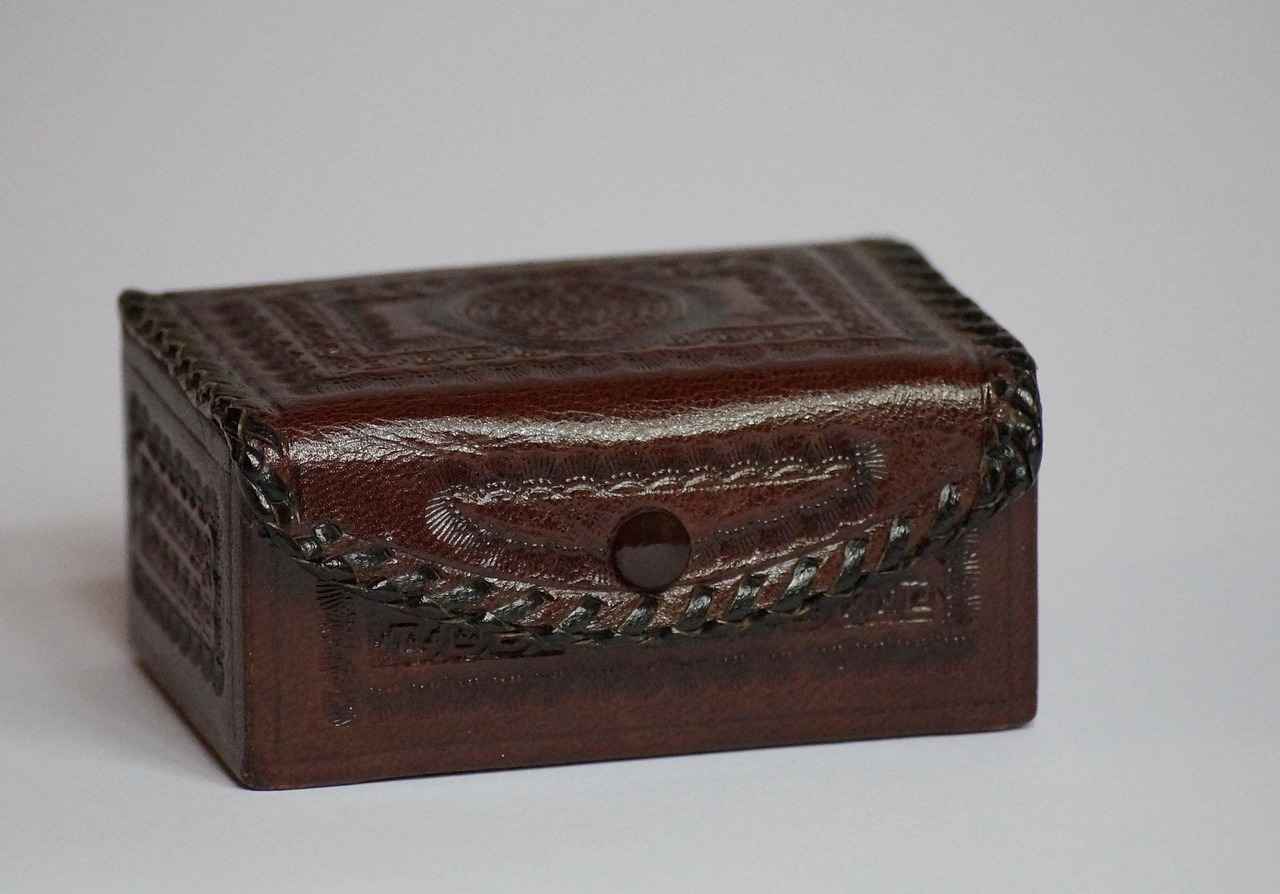
Where to Buy Authentic Jewelry?
When it comes to purchasing jewelry, the importance of choosing reputable sources cannot be overstated. This choice is essential for acquiring authentic pieces that hold their value and beauty over time. Knowing where to shop can significantly increase your chances of acquiring genuine items, ensuring that your investment is worthwhile.
Purchasing jewelry from trusted retailers not only guarantees authenticity but also provides peace of mind. Reputable sources typically have established a history of quality and customer satisfaction. They are less likely to engage in deceptive practices, which can be prevalent in the jewelry market.
- Established Jewelry Stores: Visiting well-known jewelry stores is one of the safest ways to ensure that you are buying authentic pieces. These retailers often have a long-standing reputation and knowledgeable staff who can answer your questions.
- Online Retailers: While online shopping offers convenience, it is important to choose websites with solid reputations. Look for online retailers that provide detailed product descriptions and customer reviews.
- Auctions and Estate Sales: These venues can offer unique pieces, but it’s crucial to verify the authenticity of items before purchasing. Research the auction house or estate sale company to ensure they are reputable.
- Direct from Designers: Buying directly from jewelry designers can be a rewarding experience. This not only supports artisans but also allows you to learn about the piece’s origin and craftsmanship.
Before making a purchase, it’s essential to conduct thorough research on the retailer. Here are some steps to follow:
- Check Reviews: Look for customer reviews on independent websites to gauge the retailer’s reputation. Pay attention to feedback regarding authenticity and customer service.
- Look for Certifications: Reputable jewelers often have certifications or memberships in professional organizations, which can serve as indicators of their credibility.
- Ask About Return Policies: A trustworthy retailer will have a clear return policy, allowing you to return items if they do not meet your expectations.
Purchasing from unreliable sources can lead to numerous pitfalls, including:
- Fake or Imitation Pieces: Many sellers may offer counterfeit jewelry that looks genuine but lacks any real value.
- Overpaying: Without proper knowledge, buyers can easily overpay for items that are not authentic.
- Lack of Support: Unreliable sellers often do not provide adequate customer support, leaving buyers with limited recourse if issues arise.
Online reviews can be a valuable resource when selecting where to buy jewelry. Look for patterns in feedback, such as:
- Positive Experiences: Consistent praise for authenticity and quality is a good sign.
- Red Flags: Multiple complaints about fraudulent practices or poor customer service should raise concerns.
If you believe you have purchased fake jewelry, it’s important to act quickly. Start by contacting the seller to express your concerns. If they are unresponsive or unwilling to resolve the issue, consider seeking legal advice to understand your rights and options.
What Are Trusted Retailers and Brands?
When it comes to purchasing jewelry, ensuring the authenticity of the piece is paramount. One of the most effective ways to achieve this is by researching trusted retailers and brands. This process not only helps in identifying genuine products but also protects buyers from potential scams and low-quality imitations.
Trusted retailers have established their reputation over time, often built on a foundation of quality and reliability. They are known for adhering to ethical practices and offering authentic products. By choosing to shop from these retailers, buyers can feel more confident in their purchases.
- Look for Established Names: Brands that have been in the market for several years often have a track record of quality.
- Check for Certifications: Reputable retailers usually possess certifications that validate their authenticity.
- Read Customer Reviews: Online reviews can provide insights into a retailer’s credibility and customer service.
A trustworthy retailer typically exhibits the following characteristics:
- Transparency: They provide clear information about their products, including details on materials and craftsmanship.
- Return Policies: A solid return policy indicates that the retailer stands behind their products.
- Customer Support: Reliable retailers offer robust customer support to address any concerns.
Finding trusted retailers is easier than ever, thanks to the internet. Here are some avenues to explore:
- Online Marketplaces: Platforms like Etsy and Amazon often feature verified sellers with positive ratings.
- Jewelry Shows: Attending local or national jewelry shows can connect you with reputable brands.
- Social Media: Following brands on social media can provide insights into their practices and customer interactions.
Online reviews are a powerful tool for assessing a retailer’s reputation. Here are some tips on how to interpret them:
- Look for Consistency: A consistent pattern of positive reviews can indicate reliability.
- Evaluate Negative Feedback: Pay attention to how the retailer responds to complaints; a professional response can be a good sign.
- Check Multiple Sources: Don’t rely solely on one review platform; cross-reference reviews from different sites.
Purchasing jewelry from unverified sellers can lead to several risks, including:
- Fraud: There is a high chance of receiving counterfeit products.
- Quality Issues: Low-quality materials may be used, resulting in a poor purchase.
- Lack of Support: Unverified sellers may not offer any customer service or return options.
In summary, researching trusted retailers and brands is crucial for ensuring authenticity in jewelry purchases. By focusing on established names and utilizing resources like online reviews, buyers can make informed decisions that protect their investments. Always prioritize transparency and customer support when selecting where to shop for your jewelry needs.
How to Use Online Reviews for Guidance?
When it comes to making informed decisions about purchasing jewelry, online reviews can serve as a crucial resource. They provide insights into a seller’s reputation, which can greatly influence your buying experience. However, understanding how to interpret these reviews is essential for ensuring you make the right choice.
Online reviews offer a glimpse into the experiences of previous customers. They can highlight both the positive and negative aspects of a seller’s service, product quality, and customer support. A collection of reviews can help paint a broader picture of what you can expect when purchasing from a particular retailer.
Not all reviews are created equal. To determine which reviews are trustworthy, consider the following:
- Look for Verified Purchases: Reviews from verified buyers are generally more reliable.
- Check the Volume: A large number of reviews can indicate a more consistent level of service.
- Read Detailed Feedback: Reviews that provide specific details about the product and service are often more credible.
When reading reviews, pay attention to:
- Quality of the Jewelry: Look for comments about the authenticity and craftsmanship of the pieces.
- Customer Service: Reviews that mention how the seller handled issues can reveal a lot about their reliability.
- Shipping and Handling: Timeliness and packaging quality can also be indicators of a reputable seller.
While reviews can be helpful, be cautious of potential red flags:
- Overly Positive Reviews: If all reviews are glowing with no criticism, they may not be genuine.
- Inconsistent Ratings: A seller with a mix of high and low ratings could indicate fluctuating quality.
- Lack of Detailed Feedback: Reviews that are vague or overly simplistic may not provide valuable insights.
To maximize the benefits of online reviews, consider the following strategies:
- Cross-Reference Reviews: Look at multiple platforms to get a well-rounded view of the seller.
- Engage with Reviewers: If possible, ask previous customers about their experiences to gain deeper insights.
- Trust Your Instincts: If something feels off, it’s always best to err on the side of caution.
In conclusion, online reviews can significantly aid in your jewelry purchasing decisions. By knowing how to interpret these reviews effectively, you can navigate the complexities of online shopping with confidence. Remember to look for trustworthy sources, identify red flags, and engage with the community to enhance your understanding of a seller’s reputation.

What Should You Do If You Suspect Fraud?
If you find yourself in a situation where you suspect that you have purchased fake jewelry, it is crucial to know the steps you can take to address the issue effectively. Being informed about your rights and the available options can significantly impact the resolution of the matter.
The first step is to examine the jewelry closely. Check for any signs that may indicate it is not genuine, such as:
- Inconsistent Hallmarks: Genuine jewelry typically has a hallmark indicating its metal content and manufacturer.
- Poor Craftsmanship: Look for irregularities in the design, such as rough edges or poorly set stones.
- Unusual Weight: Fake pieces are often lighter than their genuine counterparts due to the use of inferior materials.
If you suspect fraud, document everything. Take clear photographs of the jewelry, including any hallmarks or stamps. Keep a record of the purchase details, including:
- Date of purchase
- Seller’s information
- Price paid
This documentation will be essential if you need to take further action.
Contact the seller in a calm and professional manner. Clearly express your concerns about the authenticity of the jewelry. Use phrases like:
"I have some questions regarding the authenticity of the jewelry I purchased. Can you provide more information about its origin and certification?"
Being polite yet firm can often lead to a resolution, as many reputable sellers will strive to maintain their reputation.
If the seller is uncooperative or if you experience a significant financial loss, you may need to seek legal advice. Understanding your rights as a consumer is vital. You may consider:
- Consulting with a lawyer who specializes in consumer rights
- Contacting your local consumer protection agency
- Filing a claim with your credit card company if applicable
There are various resources available to help consumers navigate situations involving fraudulent jewelry purchases:
- Local consumer protection offices
- Online forums and communities where you can share experiences and seek advice
- Jewelry appraisal services that can verify authenticity
To avoid falling victim to fraudulent jewelry in the future, consider the following tips:
- Research Sellers: Always check reviews and ratings before making a purchase.
- Request Documentation: Ensure that any jewelry purchase comes with a certificate of authenticity.
- Educate Yourself: Familiarize yourself with common signs of fake jewelry to make more informed decisions.
By following these steps, you can effectively address any concerns regarding potential fraud and protect yourself in future jewelry purchases.
How to Approach the Seller?
When you find yourself in a situation where you suspect that you have purchased fake jewelry, it can be both stressful and frustrating. Knowing how to approach the seller effectively is crucial for resolving the issue amicably. This guide will provide you with practical strategies for addressing your concerns while maintaining professionalism and calm.
Approaching the seller with a calm demeanor can significantly influence the outcome of your interaction. A composed attitude not only helps you communicate your concerns more clearly but also encourages the seller to respond positively. Remember, sellers are more likely to be cooperative when they feel respected and not attacked.
- Gather Evidence: Before contacting the seller, collect all relevant information, including receipts, photographs of the jewelry, and any documentation that supports your claim.
- Know Your Rights: Familiarize yourself with consumer protection laws in your area. Understanding your rights can empower you during the conversation.
- Practice Your Points: Outline the specific issues you want to address, such as discrepancies in the jewelry’s quality or authenticity. Practicing your points can help you stay focused during the discussion.
When you initiate contact, whether in person or via email, it’s essential to be clear and concise. Here’s how you can structure your conversation:
1. Start with a greeting and express appreciation for their time.2. Clearly state the issue you’ve encountered.3. Present your evidence calmly and factually.4. Ask for their perspective on the matter.5. Suggest a possible resolution, such as a refund or exchange.
Throughout the conversation, it’s vital to maintain a professional tone. Avoid using accusatory language or making personal attacks. Instead, focus on the facts and express your feelings about the situation. For example, you might say, “I was disappointed to find that the jewelry did not meet my expectations based on the description provided.” This approach fosters a more constructive dialogue.
If the seller responds negatively or refuses to acknowledge your concerns, don’t escalate the situation immediately. Instead, remain composed and reiterate your points. If necessary, ask to speak to a manager or a higher authority within the company. If the situation remains unresolved, consider documenting your interactions and seeking further action, such as filing a complaint with consumer protection agencies.
In cases where you experience significant financial loss or if you feel that you have been a victim of fraud, it may be necessary to seek legal advice. Understanding your rights and the legal avenues available can empower you to take appropriate action. Consulting with a legal professional can provide clarity on the next steps, whether that involves mediation, small claims court, or other legal remedies.
In summary, approaching the seller with a calm and professional demeanor is essential for achieving a satisfactory resolution. By preparing adequately, communicating clearly, and remaining respectful, you can navigate the situation more effectively and increase the likelihood of a positive outcome.
When to Seek Legal Advice?
When it comes to purchasing jewelry, the excitement can sometimes overshadow the need for caution. Unfortunately, the reality is that fraudulent sales can occur, leading to significant financial loss. Understanding when and how to seek legal advice is crucial for anyone who suspects they have been a victim of jewelry fraud.
Recognizing the signs of fraud is the first step in protecting yourself. Common indicators include:
- Unusually Low Prices: If a deal seems too good to be true, it probably is.
- Poor Quality or Craftsmanship: Authentic jewelry typically exhibits high-quality craftsmanship.
- Lack of Documentation: Genuine pieces should come with certificates of authenticity or appraisals.
Before making a purchase, it’s essential to conduct thorough research. Here are some proactive steps:
- Verify Seller Credentials: Check reviews and ratings from previous customers.
- Request Documentation: Always ask for certificates of authenticity for high-value items.
- Consult Experts: If you’re unsure, seek advice from a reputable jeweler or appraiser.
If you believe you have been defrauded, it is vital to take immediate action:
- Document Everything: Keep records of all communications, receipts, and any evidence of the transaction.
- Contact the Seller: Approach the seller calmly to discuss your concerns. Sometimes, misunderstandings can be resolved.
- Report the Fraud: If the seller is uncooperative, report the incident to consumer protection agencies or the police.
In cases of significant financial loss or fraud, seeking legal advice may be necessary. Here are some situations where legal counsel is advisable:
- Substantial Financial Loss: If the amount lost is significant, legal action may be required to recover funds.
- Unresolved Disputes: If the seller refuses to issue a refund or resolve the issue, a lawyer can provide guidance on your rights.
- Complex Cases: Situations involving multiple parties or jurisdictions may require professional legal assistance.
Being informed about your rights can empower you to take appropriate action. Here are key rights to be aware of:
- Right to Refund: If a product is misrepresented, you may have the right to a full refund.
- Right to Accurate Information: Sellers are legally obligated to provide accurate descriptions of their products.
- Right to Seek Legal Recourse: You have the right to pursue legal action if your rights as a consumer are violated.
In conclusion, understanding when to seek legal advice is essential for any jewelry buyer. By being aware of the signs of fraud, knowing your rights, and taking proactive steps, you can protect yourself from potential losses. If you find yourself in a situation where fraud is suspected, don’t hesitate to consult with a legal professional to explore your options.
Frequently Asked Questions
- How can I tell if my jewelry is real?
To determine if your jewelry is genuine, look for key indicators such as metal purity marks, craftsmanship quality, and hallmarks. Performing simple tests at home, like the magnet test or acid test, can also help in assessing authenticity.
- What should I look for in a hallmark?
Hallmarks provide essential information about the metal type and purity. Familiarize yourself with common markings, such as 14K for gold or 925 for sterling silver, to help you identify authentic pieces.
- Are online jewelry purchases safe?
While many online retailers are reputable, it’s crucial to watch for red flags like overly low prices or vague product descriptions. Always research the seller and read reviews to ensure a safe buying experience.
- What if I suspect I bought fake jewelry?
If you suspect fraud, approach the seller calmly to discuss your concerns. If necessary, seek legal advice, especially if you’ve incurred significant financial loss.
- Why is documentation important?
Documentation, like certificates of authenticity, verifies the jewelry’s quality and value. Always check that these documents are legitimate and align with the jewelry’s characteristics to avoid scams.

